Can’t Open a PDF in Safari? Here's How to Fix That

Your changes have been saved
Email Is sent
Please verify your email address.
You’ve reached your account maximum for followed topics.

How I Capture Stunning Sunset Photos With My Smartphone
How to write an iso image file to usb flash with etcher, i used the same dall-e prompts a year apart: here's what happened.
You’ve clicked on a link that should open a PDF in Safari. The link goes through, but you can’t see the PDF—there’s just a gray background.
You can Control-click on the PDF, and your Mac says there’s a PDF there, but you just can’t see it. Refreshing the page doesn’t fix anything, nor does restarting Safari.
I’ve been in this unusual situation before, and I can help you fix it. Read on to see how to view a PDF that Safari won’t open, and how to fix Safari so other PDFs will be visible in the future.
The Quick Fixes
If you can’t see or load a PDF in Safari, one of the easiest fixes is to stop using Safari to try to view the PDF. This means copying the PDF’s URL from Safari and pasting it into another browser, like Chrome or Microsoft Edge ( Edge works very well on Macs , for the record).
If you don’t want to open another browser though, you do have another option.
If you can Control-click on the PDF to download it or click the download button available for the PDF in the Safari window, do so. You can then open and view the PDF in Preview or your preferred PDF-viewing Preview alternative . You can drag the PDF into the Trash if you don’t end up needing it after you read it. And if you do need it in the future, you’ve already downloaded it!
These options work well, but maybe you really just want to be able to open PDFs in Safari. There are ways to do that, too, which we’ll go over in the next section.
How to Get Safari to View PDFs Again
The first place to check when you can’t view PDFs in Safari is your Safari plug-ins or extensions. It’s possible one of them is hiding the PDF from you or affecting Safari in a negative way.
To access your Safari plug-ins or extensions, open Safari > Preferences and then head to the Websites tab. Scroll down the menu on your left, and you should find the Plug-ins or Extensions headings.
Click on any plug-in in this list to see a list of current websites and whether that plug-in is working on the website where you have the PDF open. If it is, set the drop-down menu beside it to Off . Then refresh the PDF, and see if it’s visible.
With extensions, set their drop-down menus to Deny to prevent them from working. Though, if an extension is the root of the problem, it might be worth updating or removing the extension entirely to see if that improves your PDF visibility issues.
But what if you don’t have any plug-ins or extensions in your Safari preferences? Or you’ve demonstrated that they’re not the issue with seeing PDFs in Safari? The problem-causing plug-in might be hidden away in your Mac Library instead.
Specifically, the AdobePDFViewer plug-ins are likely to be the root of your problem. To find these plugins and remove them, so PDFs become visible in Safari again, head to Finder > Go > Go to Folder .
In the search window that appears, type in or copy and paste /Library/Internet Plug-ins . Locate and select all files with AdobePDFViewer in the name in the Internet Plug-Ins Finder window, and drag them into your Trash.
Your Mac may prompt you to input your password or use Touch ID to confirm you want to move these plug-ins. Do whichever you want to ensure those files go into your Trash.
Refresh the Safari window where you’re trying to view a PDF. The PDF should now be visible to you!
Different Safari PDF Visibility Fixes for Different Moments
I was very excited to find several solutions to the invisible PDF problem in Safari, and I hope my findings can help you out too.
Whether you’re happy opening PDFs in non-Safari browsers to save time or are eager to delve into your Mac’s library to improve your workflow in Safari over the long term, the tips above will help you view PDFs online when you need them.
- Safari Browser
Adobe Community
- Global community
- 日本語コミュニティ Dedicated community for Japanese speakers
- 한국 커뮤니티 Dedicated community for Korean speakers
- Discussions
Opening PDF in Safari
Copy link to clipboard
1 Correct answer
never-displayed
Dark Reader for Safari (iOS, iPadOS, macOS) is available on the App Store.
Update 2023: Dark Reader for Safari 2.0 is available for macOS
You can now create your own colorful theme, enable native dark theme detection and manage a list of sites where the extension is enabled.
- Quit Safari.
- Open Safari again. Go to Settings... menu.
- Go to Extensions tab.
- If you see two Dark Reader instances, disable the one that has version 1.4.6 .
- Enable Dark Reader 2.0.0 .
- If you still see any issues, please restart the browser or the system, reinstall the app.
- Your settings from 1.4.6 will not be transferred to 2.0.0.
- The app will no longer work in macOS High Sierra 10.13.
Update 2021: Dark Reader for iOS is available in App Store
This version of Dark Reader works in all Apple devices that support iOS 15 or iPadOS 15. Install Dark Reader for iOS and iPadOS .
By purchasing this app you get dark mode for safari browser in all platforms (macOS, iOS, iPadOS). If you purchased the Mac app before, you don't have to pay again. Due to an App Store bug you will see a price for the iOS app. Simply proceed with the payment and you will see a message saying that you have already paid. Enjoy!
Install Dark Reader for Safari from the App Store .
Dark Reader for Safari partially uses code from the original Dark Reader, some part of the extension is rewritten in Swift. Most of the features will be ported soon.
How to use it
- Open Safari preferences .
- Open Extensions tab.
- Click checkbox near Dark Reader.
- Adjust the settings for your taste.
Customize theme for specific website
- Click More theme options button.
- Click domain.name.com button at top.
- Configure the theme.
- Click again if you would like to use global theme settings.
Known issues
- Extension doesn't work after install or update, doesn't show up in Safari Preferences or wrong version number is displayed — Quit Safari and open again.
- IFrames are not inverted — Safari has no API to determine the address of the web page, where the IFrame is hosted, when it has a different domain name.
- On some websites a dialog asking for credentials appears — Dynamic mode loads CSS files and images for analysis, but some websites require authentication to access these resources. Please use Filter mode for such websites.
- After 1.3.0 update there is too much Sepia — Please, click Settings, then click Theme, scroll down, reduce Sepia from 100% to 0%.
- macOS Catalina Auto appearance doesn't work correctly — Please, go to General System Preferences, select Light appearance, then switch to Auto again.
For any questions and bug reports please e-mail to [email protected]

Adobe Acrobat
The power of acrobat, right in your browser..
Do more than just view your PDF files online. With the Acrobat extension, you can mark up proposals, leave sticky note comments, and use your favorite PDF tools without leaving your browser.
10,000,000+ active users
Create a seamless workflow.

Install it quickly.
With the click of a button, install the Acrobat extension in your Chrome browser.
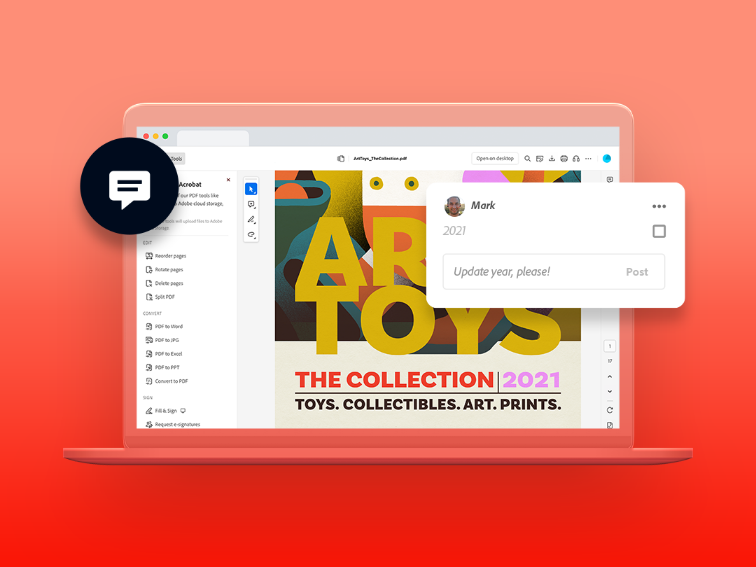
Use it on the fly.
Make comments, edit PDFs, fill out and sign forms, and even share documents for review.

Save time while you browse.
View PDFs or send them off for a signature without downloading a thing.
Make more happen from your browser.
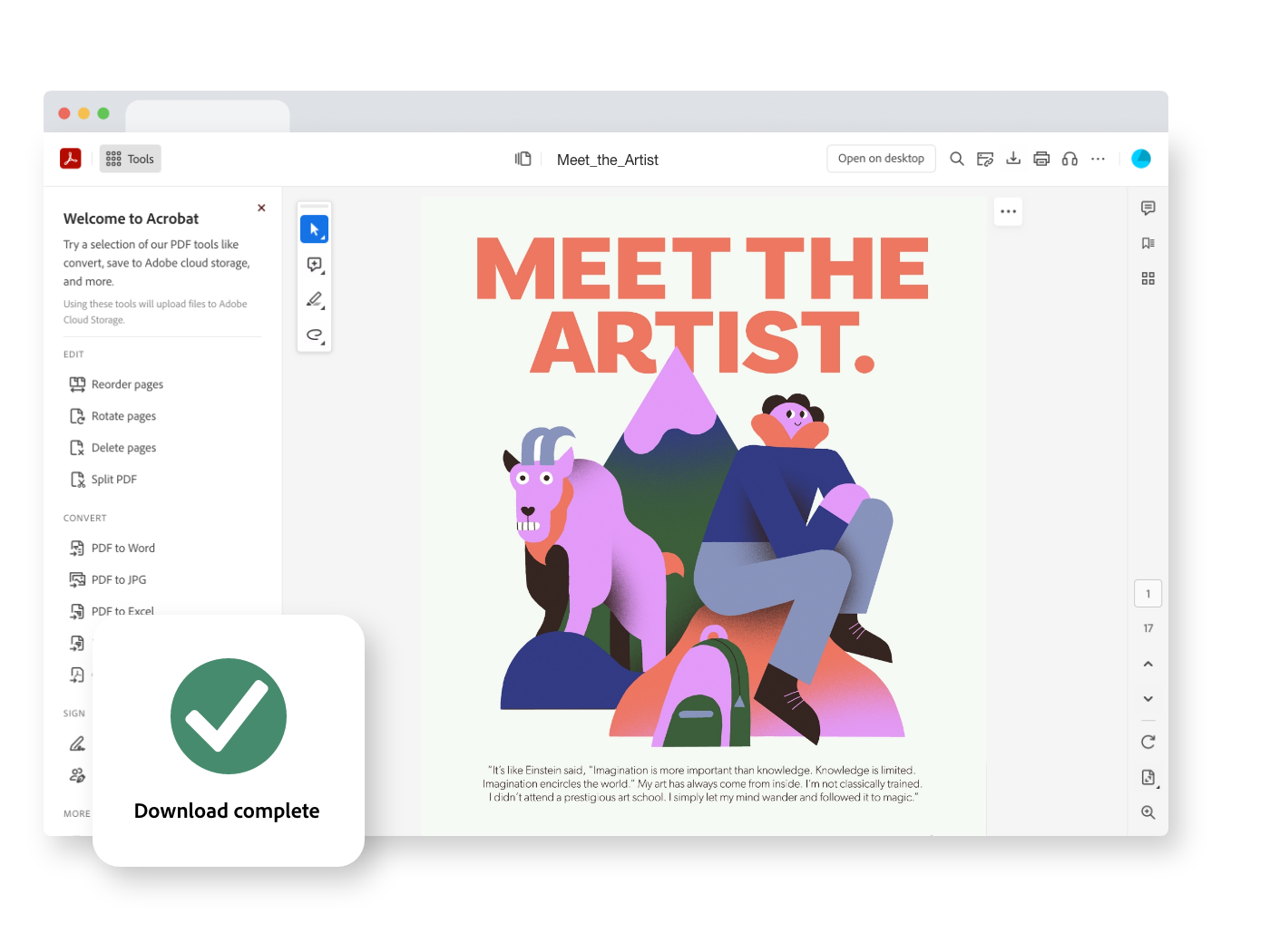
Open PDFs wherever you work.
Store documents in the cloud so you can work from anywhere. Then view, download, or print in a dash.
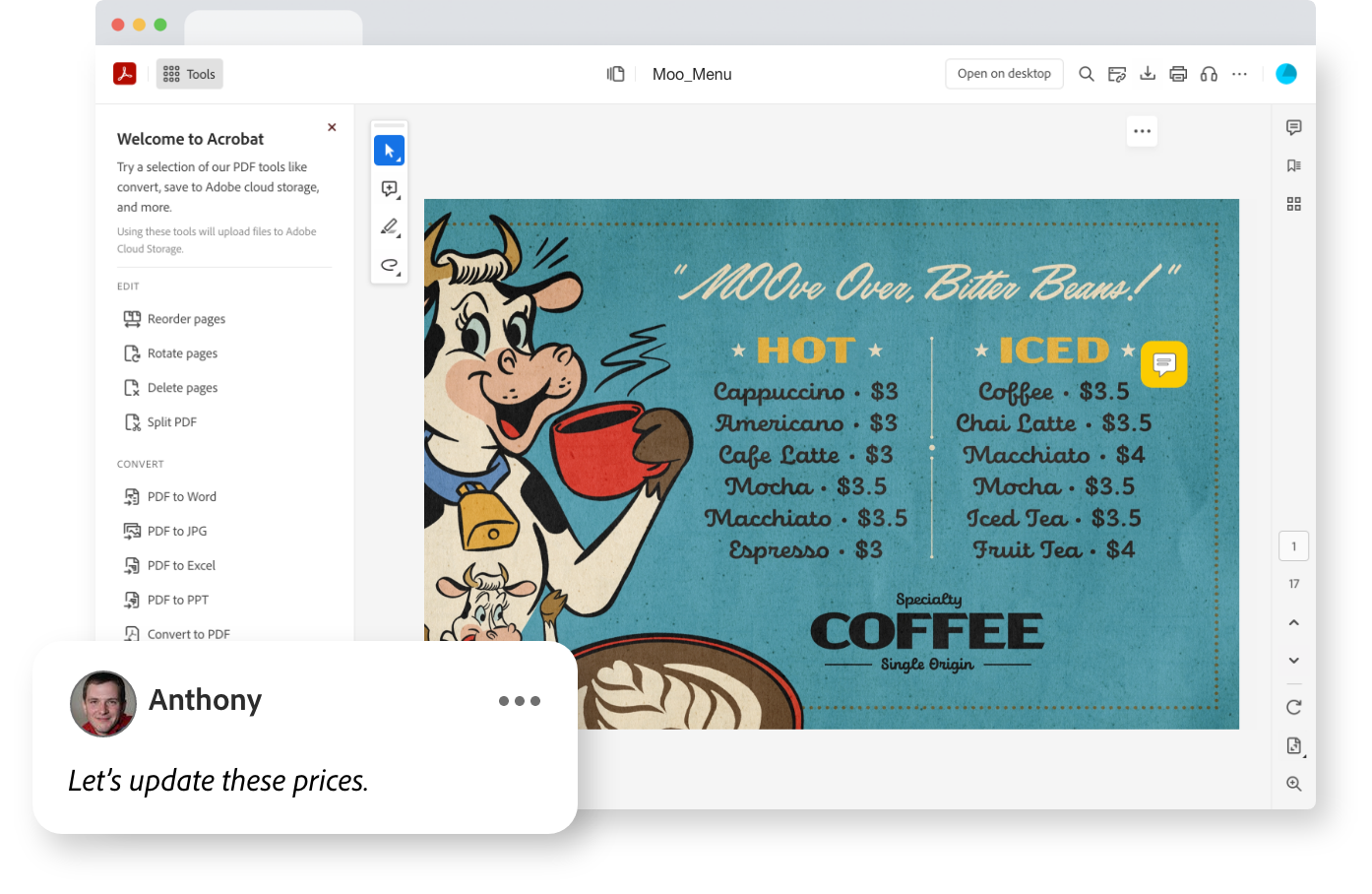
Collaborate in the moment.
Mark up PDFs with comments and freestyle drawings right from your browser window. Even fill out forms and sign them without a drop of ink.
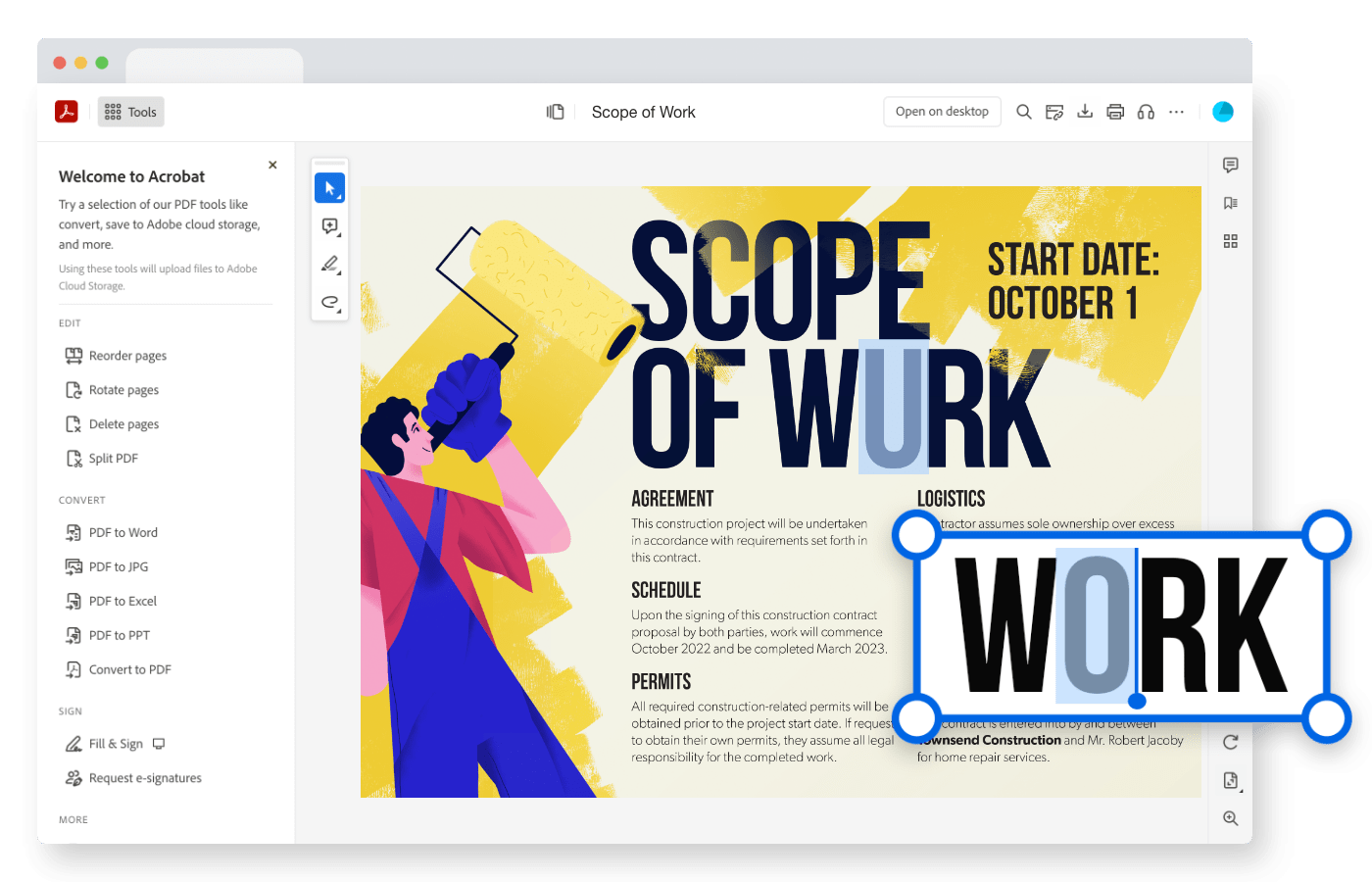
Quickly edit PDFs.
See a typo? Need to update an image? Edit your PDF in just a few clicks from your browser.
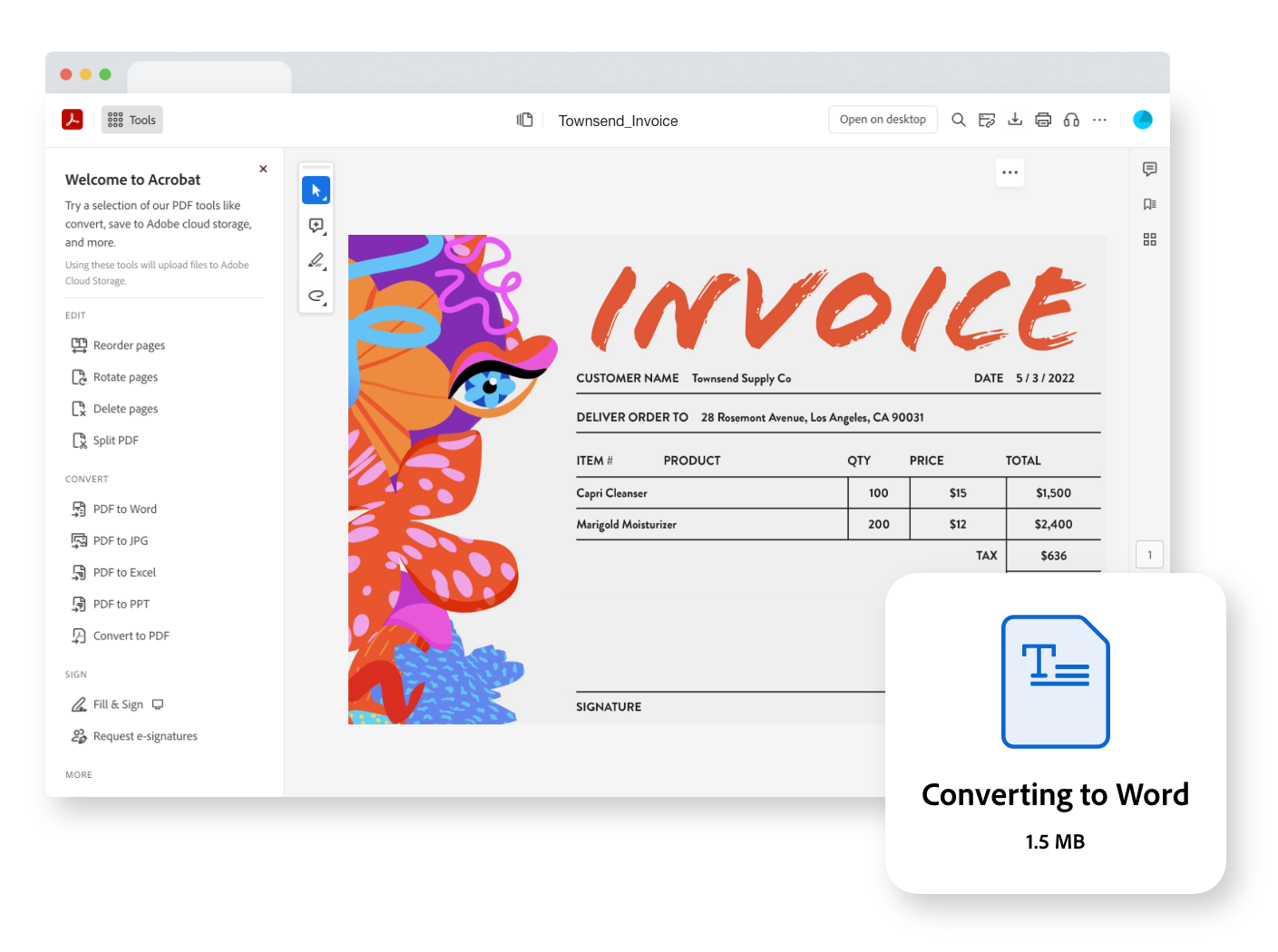
Convert any document to a new format.
Convert PDFs to Microsoft Word, Excel, or even JPEG files. Or turn any of those files into PDFs — all in a couple of clicks.
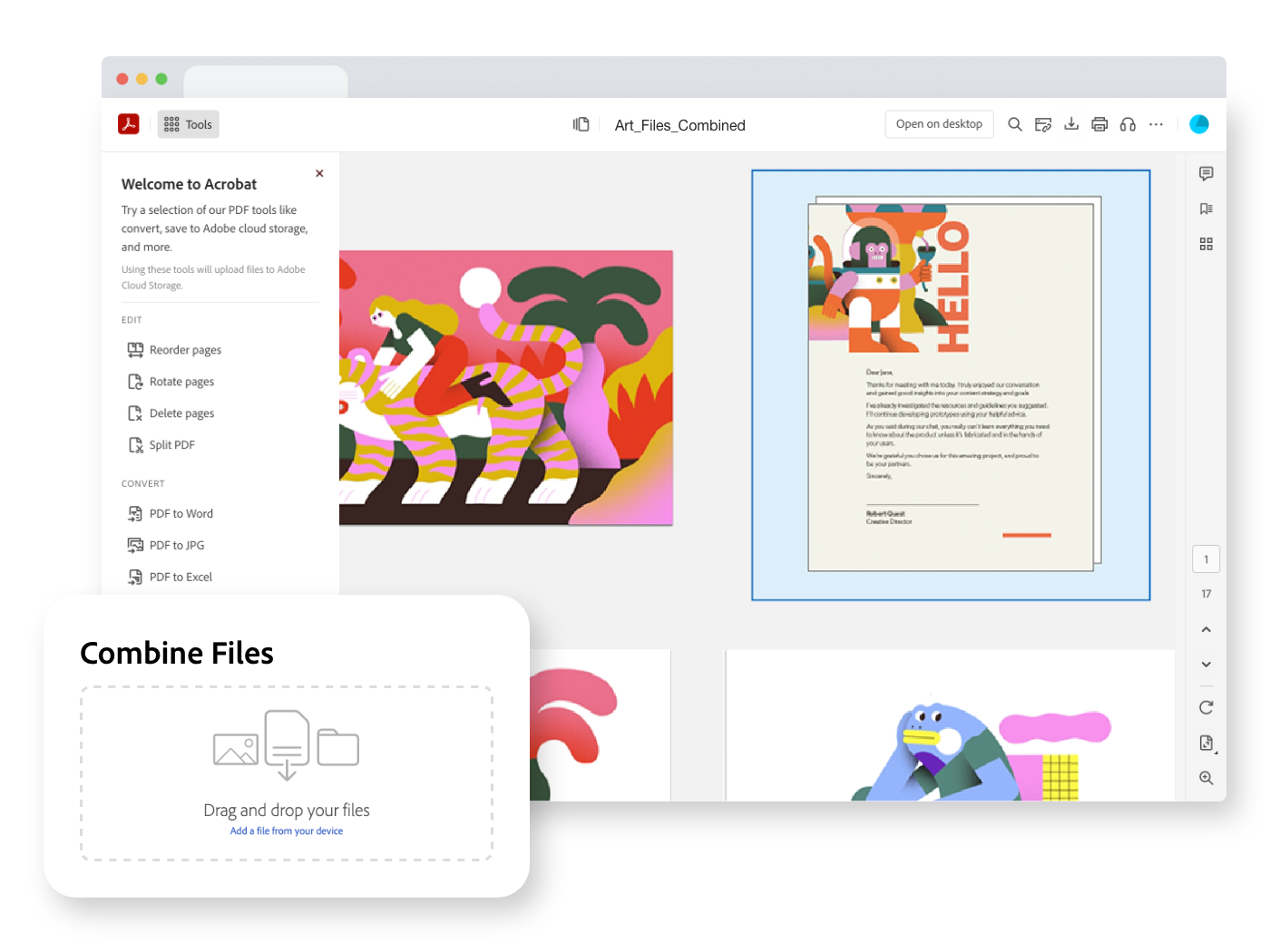
Combine files and organize them, too.
Combine files into a single PDF. Then reorder, rotate, and organize the pages to make a document that flows.
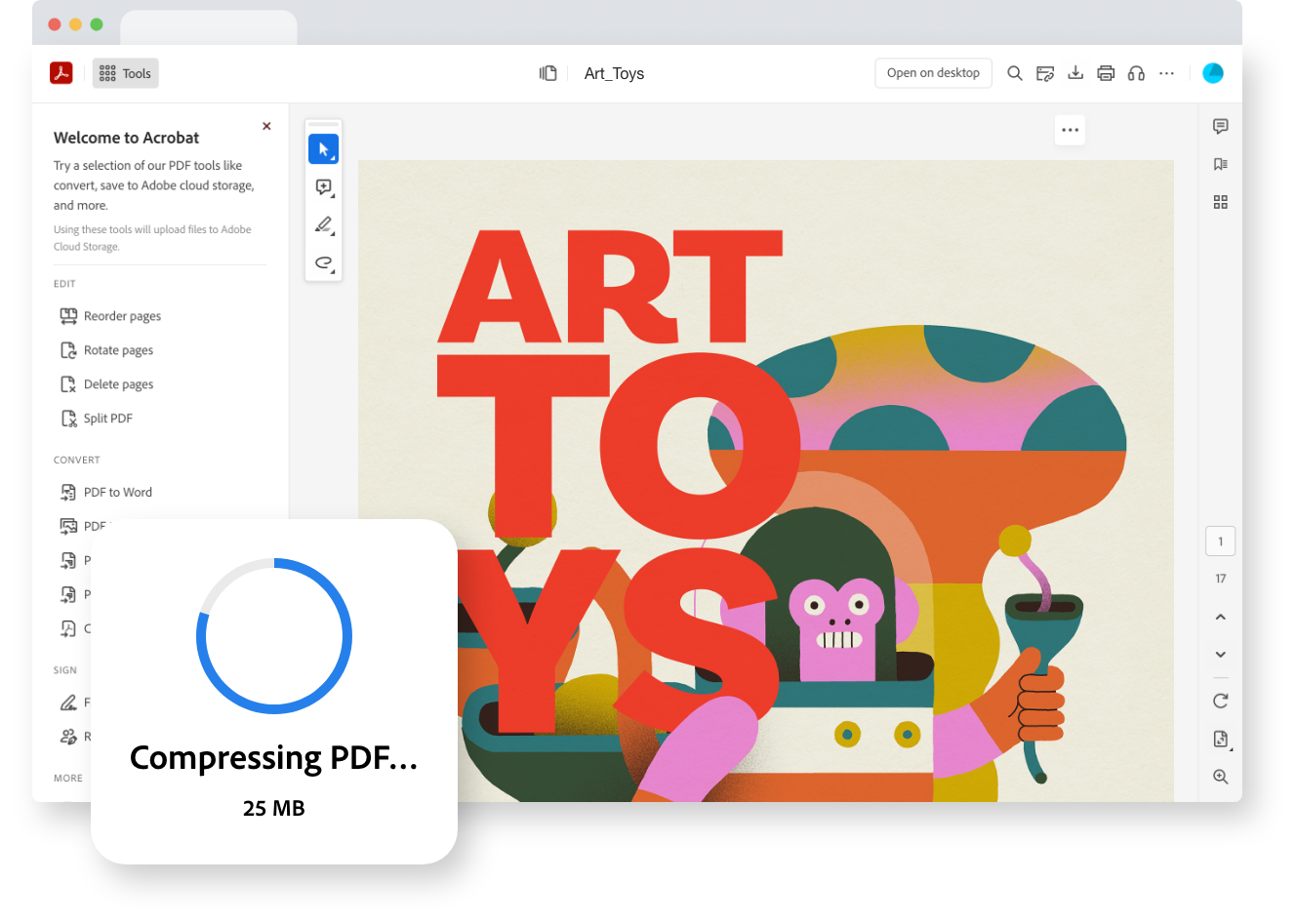
Make your PDFs more compact.
Is your document too big to share? Reduce the size of any PDF by compressing it so that you can send it off to be filled out, signed, or reviewed.
Accomplish it all. Try Acrobat Pro to get premium features.
Upgrade to Acrobat Pro and get unlimited access to the functionalities you need to keep projects moving from the web.
Integrates with Microsoft 365.
Create, share, sign, and track PDFs without leaving your favorite Microsoft 365 apps. Acrobat integrations make it easier to get work done.
Make anything a PDF.
Convert all your favorite file formats into PDFs that can be easily viewed on any device.
Top secret? Protect it.
Add a password and secure your documents with a few quick clicks. It’s that easy to keep your info safe when sharing it with others.
Get it e-signed online.
Send off forms from your desktop and get them signed in no time and without a drop of ink.
Explore Acrobat plans to get the tools you'll use every day.
Brush up PDFs. Work from any device. Sign in a snap. Find the perfect plan to match your needs.
Acrobat Standard
Convert, edit, e-sign, protect.
Starting at
Annual subscription, cancel within 14 days for a full refund . Windows and Mac.
Recommended
Acrobat Pro
Our most comprehensive PDF solution with full convert and edit capabilities, advanced protection, and powerful e-signature features.
Acrobat Pro for teams
Comprehensive PDF and e-sign tools with advanced features and Admin Console.
At Adobe, we’re serious about protecting your personal information. To ensure your account details are safe, we use Secure Sockets Layer (SSL), an industry standard for encrypting private data over the internet.
Do more with PDFs in Edge.
Use the Adobe Acrobat extension to edit PDFs, convert them to editable Microsoft files, and more.
Edit your PDF in just a few clicks from your browser.
From PDF to Microsoft Word. And vice versa.
If you’re missing the source file or are looking to reuse your work, convert your PDF to Microsoft Word.
Adobe Acrobat Extension for Google Chrome
PDF Power in your browser.
Language Navigation
iPhone User Guide
- iPhone models compatible with iOS 17
- R ' class='toc-item' data-ss-analytics-link-url='https://support.apple.com/guide/iphone/iphone-xr-iph017302841/ios' data-ajax-endpoint='https://support.apple.com/guide/iphone/iphone-xr-iph017302841/ios' data-ss-analytics-event="acs.link_click" href='https://support.apple.com/guide/iphone/iphone-xr-iph017302841/ios' id='toc-item-IPH017302841' data-tocid='IPH017302841' > iPhone X R
- S ' class='toc-item' data-ss-analytics-link-url='https://support.apple.com/guide/iphone/iphone-xs-iphc00446242/ios' data-ajax-endpoint='https://support.apple.com/guide/iphone/iphone-xs-iphc00446242/ios' data-ss-analytics-event="acs.link_click" href='https://support.apple.com/guide/iphone/iphone-xs-iphc00446242/ios' id='toc-item-IPHC00446242' data-tocid='IPHC00446242' > iPhone X S
- S Max' class='toc-item' data-ss-analytics-link-url='https://support.apple.com/guide/iphone/iphone-xs-max-iphcd2066870/ios' data-ajax-endpoint='https://support.apple.com/guide/iphone/iphone-xs-max-iphcd2066870/ios' data-ss-analytics-event="acs.link_click" href='https://support.apple.com/guide/iphone/iphone-xs-max-iphcd2066870/ios' id='toc-item-IPHCD2066870' data-tocid='IPHCD2066870' > iPhone X S Max
- iPhone 11 Pro
- iPhone 11 Pro Max
- iPhone SE (2nd generation)
- iPhone 12 mini
- iPhone 12 Pro
- iPhone 12 Pro Max
- iPhone 13 mini
- iPhone 13 Pro
- iPhone 13 Pro Max
- iPhone SE (3rd generation)
- iPhone 14 Plus
- iPhone 14 Pro
- iPhone 14 Pro Max
- iPhone 15 Plus
- iPhone 15 Pro
- iPhone 15 Pro Max
- Setup basics
- Make your iPhone your own
- Take great photos and videos
- Keep in touch with friends and family
- Share features with your family
- Use iPhone for your daily routines
- Expert advice from Apple Support
- What’s new in iOS 17
- Turn on and set up iPhone
- Wake, unlock, and lock
- Set up cellular service
- Use Dual SIM
- Connect to the internet
- Sign in with Apple ID
- Subscribe to iCloud+
- Find settings
- Set up mail, contacts, and calendar accounts
- Learn the meaning of the status icons
- Charge the battery
- Charge with cleaner energy sources
- Show the battery percentage
- Check battery health and usage
- Use Low Power Mode
- Read and bookmark the user guide
- Learn basic gestures
- Learn gestures for iPhone models with Face ID
- Adjust the volume
- Silence iPhone
- Find your apps in App Library
- Switch between open apps
- Quit and reopen an app
- Multitask with Picture in Picture
- Access features from the Lock Screen
- Use the Dynamic Island
- Perform quick actions
- Search on iPhone
- Get information about your iPhone
- View or change cellular data settings
- Travel with iPhone
- Change sounds and vibrations
- Use the Action button on iPhone 15 Pro and iPhone 15 Pro Max
- Create a custom Lock Screen
- Change the wallpaper
- Adjust the screen brightness and color balance
- Keep the iPhone display on longer
- Use StandBy
- Customize the text size and zoom setting
- Change the name of your iPhone
- Change the date and time
- Change the language and region
- Organize your apps in folders
- Add, edit, and remove widgets
- Move apps and widgets on the Home Screen
- Remove or delete apps
- Use and customize Control Center
- Change or lock the screen orientation
- View and respond to notifications
- Change notification settings
- Set up a Focus
- Allow or silence notifications for a Focus
- Turn a Focus on or off
- Stay focused while driving
- Customize sharing options
- Type with the onscreen keyboard
- Dictate text
- Select and edit text
- Use predictive text
- Use text replacements
- Add or change keyboards
- Add emoji and stickers
- Take a screenshot
- Take a screen recording
- Draw in documents
- Add text, shapes, signatures, and more
- Fill out forms and sign documents
- Use Live Text to interact with content in a photo or video
- Use Visual Look Up to identify objects in your photos and videos
- Lift a subject from the photo background
- Subscribe to Apple Arcade
- Play with friends in Game Center
- Connect a game controller
- Use App Clips
- Update apps
- View or cancel subscriptions
- Manage purchases, settings, and restrictions
- Install and manage fonts
- Buy books and audiobooks
- Annotate books
- Access books on other Apple devices
- Listen to audiobooks
- Set reading goals
- Organize books
- Create and edit events in Calendar
- Send invitations
- Reply to invitations
- Change how you view events
- Search for events
- Change calendar and event settings
- Schedule or display events in a different time zone
- Keep track of events
- Use multiple calendars
- Use the Holidays calendar
- Share iCloud calendars
- Camera basics
- Set up your shot
- Apply Photographic Styles
- Take Live Photos
- Take Burst mode shots
- Take a selfie
- Take panoramic photos
- Take macro photos and videos
- Take portraits
- Take Night mode photos
- Take Apple ProRAW photos
- Adjust the shutter volume
- Adjust HDR camera settings
- Record videos
- Record spatial videos for Apple Vision Pro
- Record ProRes videos
- Record videos in Cinematic mode
- Change video recording settings
- Save camera settings
- Customize the Main camera lens
- Change advanced camera settings
- View, share, and print photos
- Use Live Text
- Scan a QR code
- See the world clock
- Set an alarm
- Change the next wake up alarm
- Use the stopwatch
- Use multiple timers
- Add and use contact information
- Edit contacts
- Add your contact info
- Use NameDrop on iPhone to share your contact info
- Use other contact accounts
- Use Contacts from the Phone app
- Merge or hide duplicate contacts
- Export contacts
- Get started with FaceTime
- Make FaceTime calls
- Receive FaceTime calls
- Create a FaceTime link
- Take a Live Photo
- Turn on Live Captions in a FaceTime call
- Use other apps during a call
- Make a Group FaceTime call
- View participants in a grid
- Use SharePlay to watch, listen, and play together
- Share your screen in a FaceTime call
- Collaborate on a document in FaceTime
- Use video conferencing features
- Hand off a FaceTime call to another Apple device
- Change the FaceTime video settings
- Change the FaceTime audio settings
- Change your appearance
- Leave a call or switch to Messages
- Block unwanted callers
- Report a call as spam
- Connect external devices or servers
- Modify files, folders, and downloads
- Search for files and folders
- Organize files and folders
- Set up iCloud Drive
- Share files and folders in iCloud Drive
- Use an external storage device, a file server, or a cloud storage service
- Share your location
- Meet up with a friend
- Send your location via satellite
- Add or remove a friend
- Locate a friend
- Get notified when friends change their location
- Notify a friend when your location changes
- Turn off Find My
- Add your iPhone
- Add your iPhone Wallet with MagSafe
- Get notified if you leave a device behind
- Locate a device
- Mark a device as lost
- Erase a device
- Remove a device
- Add an AirTag
- Share an AirTag or other item in Find My on iPhone
- Add a third-party item
- Get notified if you leave an item behind
- Locate an item
- Mark an item as lost
- Remove an item
- Adjust map settings
- Get started with Fitness
- Track daily activity and change your move goal
- See your activity summary
- Sync a third-party workout app
- Change fitness notifications
- Share your activity
- Subscribe to Apple Fitness+
- Find Apple Fitness+ workouts and meditations
- Start an Apple Fitness+ workout or meditation
- Create a Custom Plan in Apple Fitness+
- Work out together using SharePlay
- Change what’s on the screen during an Apple Fitness+ workout or meditation
- Download an Apple Fitness+ workout or meditation
- Get started with Freeform
- Create a Freeform board
- Draw or handwrite
- Apply consistent styles
- Position items on a board
- Search Freeform boards
- Share and collaborate
- Delete and recover boards
- Get started with Health
- Fill out your Health Details
- Intro to Health data
- View your health data
- Share your health data
- View health data shared by others
- Download health records
- View health records
- Monitor your walking steadiness
- Log menstrual cycle information
- View menstrual cycle predictions and history
- Track your medications
- Learn more about your medications
- Log your state of mind
- Take a mental health assessment
- Set up a schedule for a Sleep Focus
- Turn off alarms and delete sleep schedules
- Add or change sleep schedules
- Turn Sleep Focus on or off
- Change your wind down period, sleep goal, and more
- View your sleep history
- Check your headphone levels
- Use audiogram data
- Register as an organ donor
- Back up your Health data
- Intro to Home
- Upgrade to the new Home architecture
- Set up accessories
- Control accessories
- Control your home using Siri
- Use Grid Forecast to plan your energy usage
- Set up HomePod
- Control your home remotely
- Create and use scenes
- Use automations
- Set up security cameras
- Use Face Recognition
- Unlock your door with a home key
- Configure a router
- Invite others to control accessories
- Add more homes
- Get music, movies, and TV shows
- Get ringtones
- Manage purchases and settings
- Get started with Journal
- Write in your journal
- Review your past journal entries
- Change Journal settings
- Magnify nearby objects
- Change settings
- Detect people around you
- Detect doors around you
- Receive image descriptions of your surroundings
- Read aloud text and labels around you
- Set up shortcuts for Detection Mode
- Add and remove email accounts
- Set up a custom email domain
- Check your email
- Unsend email with Undo Send
- Reply to and forward emails
- Save an email draft
- Add email attachments
- Download email attachments
- Annotate email attachments
- Set email notifications
- Search for email
- Organize email in mailboxes
- Flag or block emails
- Filter emails
- Use Hide My Email
- Use Mail Privacy Protection
- Change email settings
- Delete and recover emails
- Add a Mail widget to your Home Screen
- Print emails
- Get travel directions
- Select other route options
- Find stops along your route
- View a route overview or a list of turns
- Change settings for spoken directions
- Get driving directions
- Get directions to your parked car
- Set up electric vehicle routing
- Report traffic incidents
- Get cycling directions
- Get walking directions
- Get transit directions
- Delete recent directions
- Get traffic and weather info
- Estimate travel time and ETA
- Download offline maps
- Search for places
- Find nearby attractions, restaurants, and services
- Get information about places
- Mark places
- Share places
- Rate places
- Save favorite places
- Explore new places with Guides
- Organize places in My Guides
- Clear location history
- Look around places
- Take Flyover tours
- Find your Maps settings
- Measure dimensions
- View and save measurements
- Measure a person’s height
- Use the level
- Set up Messages
- About iMessage
- Send and reply to messages
- Unsend and edit messages
- Keep track of messages
- Forward and share messages
- Group conversations
- Watch, listen, or play together using SharePlay
- Collaborate on projects
- Use iMessage apps
- Take and edit photos or videos
- Share photos, links, and more
- Send stickers
- Request, send, and receive payments
- Send and receive audio messages
- Animate messages
- Send and save GIFs
- Turn read receipts on or off
- Change notifications
- Block, filter, and report messages
- Delete messages and attachments
- Recover deleted messages
- View albums, playlists, and more
- Show song credits and lyrics
- Queue up your music
- Listen to broadcast radio
- Subscribe to Apple Music
- Play music together in the car with iPhone
- Listen to lossless music
- Listen to Dolby Atmos music
- Apple Music Sing
- Find new music
- Add music and listen offline
- Get personalized recommendations
- Listen to radio
- Search for music
- Create playlists
- See what your friends are listening to
- Use Siri to play music
- Change the way music sounds
- Get started with News
- Use News widgets
- See news stories chosen just for you
- Read stories
- Follow your favorite teams with My Sports
- Listen to Apple News Today
- Subscribe to Apple News+
- Browse and read Apple News+ stories and issues
- Use Offline Mode to read downloaded News content
- Manually download Apple News+ issues
- Listen to audio stories
- Solve puzzles in Apple News
- Solve crossword and crossword mini puzzles
- Solve Quartiles puzzles
- Search for news stories
- Save stories in News for later
- Subscribe to individual news channels
- Get started with Notes
- Add or remove accounts
- Create and format notes
- Draw or write
- Add photos, videos, and more
- Scan text and documents
- Work with PDFs
- Create Quick Notes
- Search notes
- Organize in folders
- Organize with tags
- Use Smart Folders
- Export or print notes
- Change Notes settings
- Make a call
- View and delete the call history
- Answer or decline incoming calls
- While on a call
- Have a conference or three-way call on iPhone
- Set up voicemail
- Check voicemail
- Change voicemail greeting and settings
- Select ringtones and vibrations
- Make calls using Wi-Fi
- Set up call forwarding
- Set up call waiting
- Block or avoid unwanted calls
- View photos and videos
- Play videos and slideshows
- Delete or hide photos and videos
- Edit photos and videos
- Trim video length and adjust slow motion
- Edit Cinematic mode videos
- Edit Live Photos
- Edit portraits
- Use photo albums
- Edit, share, and organize albums
- Filter and sort photos and videos in albums
- Make stickers from your photos
- Duplicate and copy photos and videos
- Merge duplicate photos and videos
- Search for photos
- Identify people and pets
- Browse photos by location
- Share photos and videos
- Share long videos
- View photos and videos shared with you
- Watch memories
- Personalize your memories
- Manage memories and featured photos
- Use iCloud Photos
- Create shared albums
- Add and remove people in a shared album
- Add and delete photos and videos in a shared album
- Set up or join an iCloud Shared Photo Library
- Add content to an iCloud Shared Photo Library
- Use iCloud Shared Photo Library
- Import and export photos and videos
- Print photos
- Find podcasts
- Listen to podcasts
- Follow your favorite podcasts
- Use the Podcasts widget
- Organize your podcast library
- Download, save, or share podcasts
- Subscribe to podcasts
- Listen to subscriber-only content
- Change download settings
- Make a grocery list
- Add items to a list
- Edit and manage a list
- Search and organize lists
- Work with templates
- Use Smart Lists
- Print reminders
- Use the Reminders widget
- Change Reminders settings
- Browse the web
- Search for websites
- Customize your Safari settings
- Change the layout
- Use Safari profiles
- Open and close tabs
- Organize your tabs
- View your Safari tabs from another Apple device
- Share Tab Groups
- Use Siri to listen to a webpage
- Bookmark favorite webpages
- Save pages to a Reading List
- Find links shared with you
- Annotate and save a webpage as a PDF
- Automatically fill in forms
- Get extensions
- Hide ads and distractions
- Clear your cache and cookies
- Browse the web privately
- Use passkeys in Safari
- Check stocks
- Manage multiple watchlists
- Read business news
- Add earnings reports to your calendar
- Use a Stocks widget
- Translate text, voice, and conversations
- Translate text in apps
- Translate with the camera view
- Subscribe to Apple TV+, MLS Season Pass, or an Apple TV channel
- Add your TV provider
- Get shows, movies, and more
- Watch sports
- Watch Major League Soccer with MLS Season Pass
- Control playback
- Manage your library
- Change the settings
- Make a recording
- Play it back
- Edit or delete a recording
- Keep recordings up to date
- Organize recordings
- Search for or rename a recording
- Share a recording
- Duplicate a recording
- Keep cards and passes in Wallet
- Set up Apple Pay
- Use Apple Pay for contactless payments
- Use Apple Pay in apps and on the web
- Track your orders
- Use Apple Cash
- Use Apple Card
- Use Savings
- Pay for transit
- Access your home, hotel room, and vehicle
- Add identity cards
- Use COVID-19 vaccination cards
- Check your Apple Account balance
- Use Express Mode
- Organize your Wallet
- Remove cards or passes
- Check the weather
- Check the weather in other locations
- View weather maps
- Manage weather notifications
- Use Weather widgets
- Learn the weather icons
- Find out what Siri can do
- Tell Siri about yourself
- Have Siri announce calls and notifications
- Add Siri Shortcuts
- About Siri Suggestions
- Use Siri in your car
- Change Siri settings
- Contact emergency services
- Use Emergency SOS via satellite
- Request Roadside Assistance via satellite
- Set up and view your Medical ID
- Use Check In
- Manage Crash Detection
- Reset privacy and security settings in an emergency
- Set up Family Sharing
- Add Family Sharing members
- Remove Family Sharing members
- Share subscriptions
- Share purchases
- Share locations with family and locate lost devices
- Set up Apple Cash Family and Apple Card Family
- Set up parental controls
- Set up a child’s device
- Get started with Screen Time
- Protect your vision health with Screen Distance
- Set up Screen Time
- Set communication and safety limits and block inappropriate content
- Set up Screen Time for a family member
- Charging cable
- Power adapters
- MagSafe chargers and battery packs
- MagSafe cases and sleeves
- Qi-certified wireless chargers
- Use AirPods
- Use EarPods
- Apple Watch
- Wirelessly stream videos and photos to Apple TV or a smart TV
- Connect to a display with a cable
- HomePod and other wireless speakers
- Pair Magic Keyboard
- Enter characters with diacritical marks
- Switch between keyboards
- Use shortcuts
- Choose an alternative keyboard layout
- Change typing assistance options
- External storage devices
- Bluetooth accessories
- Share your internet connection
- Allow phone calls on your iPad and Mac
- Use iPhone as a webcam
- Hand off tasks between devices
- Cut, copy, and paste between iPhone and other devices
- Stream video or mirror the screen of your iPhone
- Start SharePlay instantly
- Use AirDrop to send items
- Connect iPhone and your computer with a cable
- Transfer files between devices
- Transfer files with email, messages, or AirDrop
- Transfer files or sync content with the Finder or iTunes
- Automatically keep files up to date with iCloud
- Intro to CarPlay
- Connect to CarPlay
- Use your vehicle’s built-in controls
- Get turn-by-turn directions
- Change the map view
- Make phone calls
- View your calendar
- Send and receive text messages
- Announce incoming text messages
- Play podcasts
- Play audiobooks
- Listen to news stories
- Control your home
- Use other apps with CarPlay
- Rearrange icons on CarPlay Home
- Change settings in CarPlay
- Get started with accessibility features
- Turn on accessibility features for setup
- Change Siri accessibility settings
- Open features with Accessibility Shortcut
- Change color and brightness
- Make text easier to read
- Reduce onscreen motion
- Customize per-app visual settings
- Hear what’s on the screen or typed
- Hear audio descriptions
- Turn on and practice VoiceOver
- Change your VoiceOver settings
- Use VoiceOver gestures
- Operate iPhone when VoiceOver is on
- Control VoiceOver using the rotor
- Use the onscreen keyboard
- Write with your finger
- Keep the screen off
- Use VoiceOver with an Apple external keyboard
- Use a braille display
- Type braille on the screen
- Customize gestures and keyboard shortcuts
- Use VoiceOver with a pointer device
- Use VoiceOver for images and videos
- Use VoiceOver in apps
- Use AssistiveTouch
- Adjust how iPhone responds to your touch
- Use Reachability
- Auto-answer calls
- Turn off vibration
- Change Face ID and attention settings
- Use Voice Control
- Adjust the side or Home button
- Use Apple TV Remote buttons
- Adjust pointer settings
- Adjust keyboard settings
- Control iPhone with an external keyboard
- Adjust AirPods settings
- Turn on Apple Watch Mirroring
- Control a nearby Apple device
- Intro to Switch Control
- Set up and turn on Switch Control
- Select items, perform actions, and more
- Control several devices with one switch
- Use hearing devices
- Use Live Listen
- Use sound recognition
- Set up and use RTT and TTY
- Flash the indicator light for notifications
- Adjust audio settings
- Play background sounds
- Display subtitles and captions
- Show transcriptions for Intercom messages
- Get live captions of spoken audio
- Type to speak
- Record a Personal Voice
- Lock iPhone to one app with Guided Access
- Use built-in privacy and security protections
- Set a passcode
- Set up Face ID
- Set up Touch ID
- Control access to information on the Lock Screen
- Keep your Apple ID secure
- Use passkeys to sign in to apps and websites
- Sign in with Apple
- Share passwords
- Automatically fill in strong passwords
- Change weak or compromised passwords
- View your passwords and related information
- Share passkeys and passwords securely with AirDrop
- Make your passkeys and passwords available on all your devices
- Automatically fill in verification codes
- Automatically fill in SMS passcodes
- Sign in with fewer CAPTCHA challenges
- Use two-factor authentication
- Use security keys
- Manage information sharing with Safety Check
- Control app tracking permissions
- Control the location information you share
- Control access to information in apps
- Control how Apple delivers advertising to you
- Control access to hardware features
- Create and manage Hide My Email addresses
- Protect your web browsing with iCloud Private Relay
- Use a private network address
- Use Advanced Data Protection
- Use Lockdown Mode
- Use Stolen Device Protection
- Receive warnings about sensitive content
- Use Contact Key Verification
- Turn iPhone on or off
- Force restart iPhone
- Back up iPhone
- Reset iPhone settings
- Restore all content from a backup
- Restore purchased and deleted items
- Sell, give away, or trade in your iPhone
- Erase iPhone
- Install or remove configuration profiles
- Important safety information
- Important handling information
- Find more resources for software and service
- FCC compliance statement
- ISED Canada compliance statement
- Ultra Wideband information
- Class 1 Laser information
- Apple and the environment
- Disposal and recycling information
- Unauthorized modification of iOS
Annotate and save a webpage as a PDF in Safari on iPhone
Tap Done, then tap Save File To.
Choose a file to save it to, then tap Save.
- The Best Tech Deals Right Now
- Is Spotify Premium Worth It?
How to Save a Web Page as a PDF in Safari on the Mac
Take that web page to go as a PDF
:max_bytes(150000):strip_icc():format(webp)/ScottOrgera-f7aca23cc84a4ea9a3f9e2ebd93bd690.jpg)
What to Know
- In Safari, open a web page and go to File > Export as PDF . Follow the on-screen prompts to name the file and select a storage location.
- Alternatively, press Command + P in Safari. Select the PDF drop-down menu, choose Save as PDF , and then select Save .
- Press Shift + Command + R in Safari to open the Reader . Saving a PDF in Reader downloads a cleaner-looking PDF.
It's easy to export a web page to a PDF file with the Apple Safari web browser on the Mac. When you save a web page to PDF, you can share it so that the information looks identical to how it appears on the website. All PDF files look the same on a computer, tablet , phone, or another device. PDFs are also an alternative to printing the web page .
How to Export a Web Page as a PDF in Safari
It takes a few clicks to convert a web page to a PDF file with Safari.
Open the web page you want to save to PDF.
Go to the File menu and choose Export as PDF .
In the window that appears, enter a name for the PDF file and choose where to save it.
Select Save to save the web page as a PDF.
How to Print a PDF From a Website in Safari
Another way to save a web page as a PDF file is to print the page to PDF.
This feature is available in most web browsers.
Navigate to the page you want to save.
Go to the File menu and select Print .
The keyboard shortcut is Command + P .
Go to the lower-left corner of the print window and select the PDF drop-down arrow.
Select Save as PDF .
Enter a title for the PDF and choose where to save it.
Select Save .
Make a Cleaner PDF in Safari
Use Reader mode to remove ads for a cleaner appearance when saving a page as a PDF. It makes sites easier to read and simpler to save.
Reader isn't available for every website.
Navigate to the site you want to save.
Go to the View menu and choose Show Reader . Or, press Shift + Command + R on the keyboard. If the Show Reader option is gray, it isn't available for the current page.
To activate Reading Mode in earlier versions of Safari, select the three-line icon next to the URL.
A pared-down version of the page opens in Reader. Save the page as a PDF or print it as a PDF to keep a copy of the page.
Get the Latest Tech News Delivered Every Day
- How to Combine PDF Files on Mac
- The 13 Best Free PDF Editors (June 2024)
- How to Save a Web Page as a PDF
- How to Send a Web Page With the Mac's Email Program
- How to Sign a PDF on Mac
- How to Convert PDF to JPG
- How to Print a Web Page
- How to Print to PDF
- How to Save Web Pages in Safari for OS X
- How to Make a PDF File
- Email a Web Page in Safari Instead of Sending a Link
- How to Save a PDF to Your iPhone or iPad
- How to Convert a Picture to PDF
- How to Save an Outlook Email as a PDF
- How to Save One Page of a PDF
- How to Convert Word to PDF
PRINTFRIENDLY
Safari Button
For printing and converting web pages to pdfs.
The easiest way to create printer-friendly and PDF versions of web pages. Easily remove ads and navigation before you print.
Join 1,000,000+ daily users of our browser extensions.
Print Friendly & PDF Bookmarklet
Below is the PrintFriendly & PDF Bookmarklet (the blue button). Follow the instructions to add to your browser.
1. Display your Bookmarks/Favorites Bar: "Show Bookmarks Toolbar"
2. Drag the "Print Friendly" button above to your Bookmarks Toolbar.

3. When you want to print a webpage, click the "Print Friendly" button in your Bookmarks Toolbar.

What is it?
PrintFriendly is a Safari extension that allows you to create printer-friendly web pages and PDFs. Soon, our extension will let you convert documents and images to PDFs, compress PDFs, sign PDFs, and edit PDFs online.
PrintFriendly is easy to use and has been trusted by millions of happy users since 2009. You can print web pages without ads, navigation, and other elements that you don’t want to print. And, there's no need to download bulky desktop applications to edit and manage your PDFs.
All the PDF tools you need
PrintFriendly helps you compress, convert, and sign PDFs. You can also merge, split, edit, and rotate PDFs. And, a bunch of other stuff too! We’re PDF experts and we make those complicated PDF tasks quite easy to do online, without downloading any software to your computer or phone.
Print web pages without ads and navigation
We make it easy to print web pages or convert them to PDFs. No more ugly ads, navigation, and unnecessary content. We let you choose what you’d like to print, so you can clean up web pages however you want.
We got you covered
We’ve been helping people print and create PDFs since 2009 and our software continues to improve every day. We’ve helped millions of people and we want to help billions more. We’re still making web pages printer friendly, and we’re adding more PDF-related features all the time.
Printing, editing, and turning web pages into PDFs is free, and always will be!
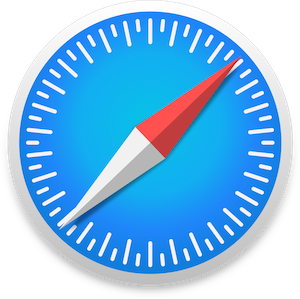
Free All-in-One Office Suite with PDF Editor
Edit PDFs like Word
Convert, merge, split, scan, and sign PDFs
More than PDF: Use Word, Excel, and PPT for FREE
Windows • MacOS • Linux • iOS • Android
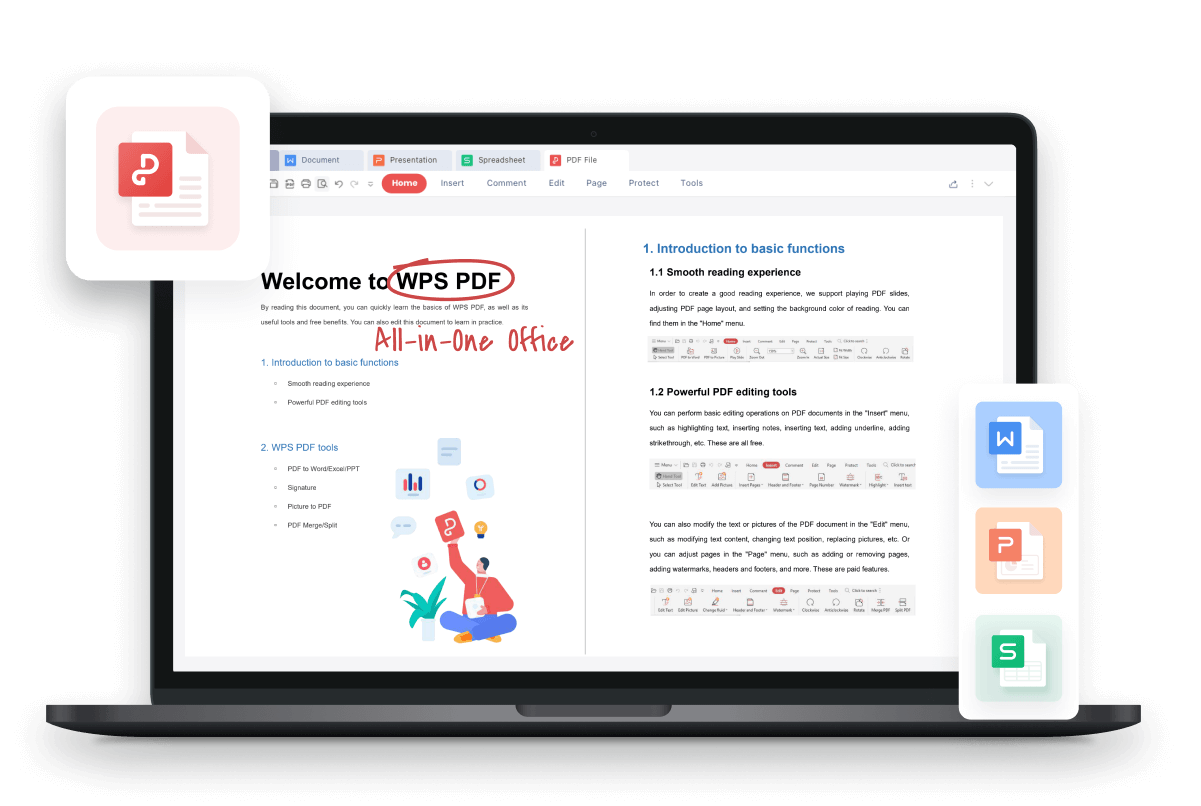
- Articles of PDF
- PDF Tutorials
9 Useful PDF Reader Extensions for Chrome, Firefox, and More
Have you heard of PDF reader extension?PDFs are one of the best formats to read documents offline and there are multiple paid and free applications for this purpose. You don’t need to use any application for online reading because there are extensions for different browsers like Chrome, Edge, Firefox, and Safari that you can add from the respective extension store. This article will elaborate on nine best PDF Reader Extensions that you can add to your browser, so make sure to stick until the end of this article.
Part 1:9 PDF Reader Extensions
1. wps pdf chrome extension.
The Chrome PDF Extension facilitates effective PDF management by allowing tasks such as adding comments, completing forms, signing contracts, and printing files, contributing to enhanced file organization. Moreover, it preserves various complimentary online conversion features for Word, Excel, PowerPoint, and image files.
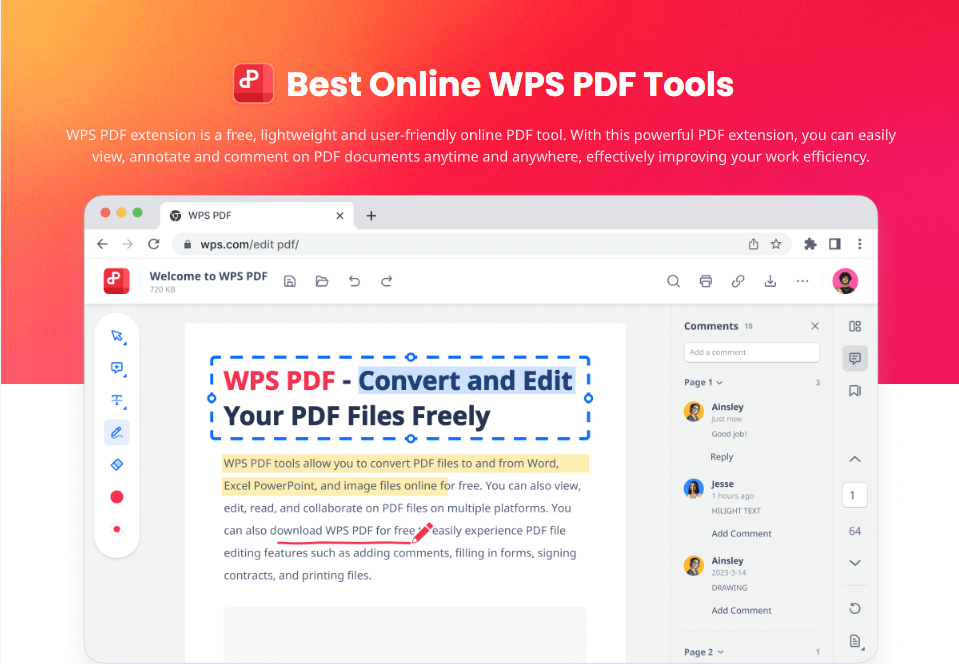
Compatible with: Chrome
Effortlessly view
Free to highlight, comments and notes
Full-featured & Free
Smooth viewing of local PDF files
File conversion capabilities
Limited platform compatibility
2. Adobe Acrobat
Adobe Acrobat is an industry-standard PDF editor with advanced editing, commenting, and security features. It includes OCR technology for scanned document conversion and integrates with Adobe Document Cloud. With this extension, you can try tools to export to and from PDF, create a PDF, merge PDF documents, organize a PDF, reduce PDF size, and more.
Compatible with: Chrome, Firefox, Edge, Safari
Stunning PDF editing and management tools.
Advanced OCR technology.
Integration with Adobe Document Cloud
Expensive subscription plans
Resource-intensive
Kami is a collaborative PDF editor with real-time annotation and commenting features. It integrates well with learning management systems and provides document markup and highlighting tools. It seamlessly integrates with OneDrive and Microsoft Teams that ensures instant accessibility.
Compatible with: Chrome, Firefox, and Edge
Real-time collaboration and annotation.
Integration with Google Classroom.
Document markup, text highlighting, and drawing tools.
Free editable teaching templates
Advanced features require a paid subscription.
Limited offline functionality
4. Awesome PDF Viewer, Reader
It is a lightweight and fast PDF reader with a simple interface. It allows page navigation, zooming, and text selection and supports bookmarking and search functionality.
Compatible with:Chrome, Firefox, and Edge
Lightweight and fast performance.
Basic PDF reading and navigation features.
Bookmarking and search functionality for easy document access.
Lacks advanced editing capabilities.
5. PDF Reader
PDF Reader is a simple browser extension for viewing and editing PDF documents. It supports page navigation, zooming, text selection, form filling, and annotation. It supports light and dark themes to suit your visibility. You can also see PDF signed and unsigned signatures, and it Partially supports executing PDF scripts.
Easy-to-use interface.
PDF viewing and basic editing features
Supports form filling and annotation.
Limited advanced editing capabilities.
Compatibility issues with complex PDF files.
6. SmallPDF
SmallPDF is an online platform offering various PDF tools , including conversion, compression, and editing. It provides a simplified interface with drag-and-drop functionality and supports integration with cloud storage services. With this extension, you can merge, split, extract PDF Pages, and rotate and delete PDF pages.
Compatible with:Chrome, Firefox, Edge, Safari
Easy-to-use Interface
Supports conversion, compression, and editing.
Integration with cloud storage services.
Limited advanced editing features
File Size constraints
7. BeeLine Reader PDF Viewer
BeeKLine Reader PDF Viewer is an online PDF converter that converts various file formats to PDF. It supports batch conversion, preserves document formatting, and offers a simple and user-friendly interface.
Compatible with: Chrome, Mozilla, and Edge
Improves reading speed and comprehension.
Supports PDF files, a widely used document format.
Potential color perception difficulties
Limited Editing features
Inkit is a versatile direct mail automation tool that helps businesses streamline offline marketing campaigns. It automates sending personalized direct mail, postcards, and letters.
Simplifies the direct mail process, saving time and effort.
Personalization and customization of mailings
Integrates with CRM systems
Limited design and creative options
9. Save As PDF
Save as PDF is a utility available in various applications that converts files into PDF format for easy sharing and printing while preserving the original formatting and layout.
Convert files to the widely supported PDF format.
Preserves original formatting
Limited advanced PDF editing capabilities.
Part 2:How to Add PDF Reader Extension in Your Browser?
Adding PDF Reader Extension to your browser is easy. Although it is different for different browsers, we have provided you with a procedure for all famous browsers.
1. For Chrome
Step 1: Launch your web browser and Go to the Chrome Web Store .Search for the extension you want to add Like Grammarly chrome extensions and tools below.
Step 2: Click on it, and select Add to Chrome.
Step 3: Open your browser and click on the three-dots icon in the top right corner, where the toolbar is present.
Step 4: Then click on More Tools> Extensions.
2. For Firefox
Step 1: Launch Mozilla Firefox. And Click the Alt key to bring up the Firefox menu bar.
Step 2: Click on the Extension Menu as shown in the below snapshot.
Step 3: It will take you to Firefox Extension Store where you can Search for your preferred extension.
Step 4: Click Add to Firefox and wait a while until the extension is added.
3. For Microsoft Edge
Step 1: In Microsoft Edge, select Extensions, located to the right of your browser address bar.
If you don't see Extensions to the right of your browser address bar, select Settings and More> Extensions.
Step 2: Select Open Microsoft Edge Add-ons.
Step 3: Find the extension you'd like to add and select Get.
Step 4: At the prompt showing permissions required by the extension, allow it and then select Add an extension if you wish to proceed
Step 5: You'll see a final prompt confirming the extension has been added.
4. For Safari
Step 1: Launch Safari and choose Safari > Preferences.
Step 2: In the Preferences window, click Security, then click Website Settings next to Internet plug-ins.
Step 3: Select the pdf reader extension in the list of plug-ins.
Q1. How to Change the Default PDF Viewer in Windows 10?
Right-click on a PDF file > "Open with" from the context menu. Then choose "Choose another app." Select the desired PDF viewer from the list of available applications or click "More apps" to explore additional options.
Q2. Why can't I view PDFs in Chrome?
If you are experiencing issues viewing PDFs in Chrome, there can be several reasons behind it. It could be due to problems with the PDF, compatibility issues with Chrome, or conflicts with certain extensions.
Q3. What is the free PDF editor extension for Chrome?
One popular free PDF editor extension for Chrome is "Smallpdf." Smallpdf offers a range of editing features, including adding text, annotations, and images to PDFs. It also provides options for merging, splitting, and compressing PDF files.
PDF reader extension is fun because it keeps the original formatting intact, but online PDF reading can be hectic due to limitations of online tools. With the help of the 9 PDF as mentioned earlier tools, you can take the online PDF reading game to the next level. These PDF Reader Extensions are available for Chrome, Firefox, Edge, and Safari.
Some of these are paid tools, while others are free. If you are looking for the best free PDF reader extension for Chrome, WPS PDF Extension is the best choice. With WPS PDF Extension, users can view PDFs and annotate, highlight, and add comments, making it an ideal tool for collaborating on documents. Additionally, the extension offers reliable performance and stability, ensuring a smooth and efficient PDF reading experience.
- 1. 7 Best Translation Chrome Extensions 2024
- 2. 5 Best PDF Editor Chrome Extensions (Free & Paid)
- 3. A Comprehensive Guide to Airtable Extensions
- 4. 7 Best ChatGPT Chrome Extensions 2024
- 5. How to Save a Webpage as a PDF in Chrome, Firefox, and Edge
- 6. How to Remove Offidocs from Firefox A Comprehensive Guide

15 years of office industry experience, tech lover and copywriter. Follow me for product reviews, comparisons, and recommendations for new apps and software.
Looking for the original Readwise?
Readwise makes it easy to revisit and learn from your digital highlights.
The first read-it-later newsletters RSS reading web highlighting read-it-later app for power readers.
Save everything to one place, highlight like a pro, and replace several apps with Reader.
All your reading in one place.
Web highlighting.
Sometimes you need to highlight on the spot. Freely highlight and annotate the open web using the Reader browser extension.
RSS is in a renaissance. Easily subscribe to the RSS feeds of your favorite websites in Reader to never miss a post.
Everyone has a forgotten folder of PDFs. Upload yours to Reader to finally integrate PDFs into your reading workflow.
YouTube has become one of the best learning platforms out there. Watch YouTube videos and highlight the transcript in Reader.
Twitter threads
Twitter threads are the new blog posts. Compile hard-to-read threads into proper long-form articles inside Reader.
Read-it-later
Most websites aren't made for reading. Save articles to Reader for a distraction-free reading experience with powerful highlighting.
Readwise was built on a foundation of ebook highlights. Upload EPUBs to Reader to enjoy ebooks alongside everything else.
Newsletters
Newsletters connect you directly to your favorite writers. Subscribe to your newsletters in Reader to spare your email inbox.
Powerful highlighting for power readers
Annotation should be the killer feature of digital reading. Instead, highlighting, tagging, & note-taking are neglected afterthoughts in other reading apps. We believe that annotations are the key to getting more out of what you read. So we've developed highlighting as a first-class feature. Highlight images, tables, rich text, and more. On any device.
UNIQUE & UNIFIED
Fully integrated with the original readwise app.

Revisit your best highlights
Highlighting is great, but what's the point if you never see those highlights again? Readwise liberates all your highlights into one place, ensuring you'll actually use them.

Remember what you read
How often do you finish a book, only to forget the key ideas a few weeks later? Readwise resurfaces the right highlight at the right time through the Daily Review.

Sync to your favorite note-taking apps
Connect Readwise to your favorite tools such as Evernote, Notion, and Obsidian. Your enriched highlights will automatically export to right where you need them.
The Daily Review: A simple habit leading to last insight
Readwise helps you remember more of what you read using the scientific principle of spaced repetition. The Daily Review resurfaces the right highlight at the right time via email or app.
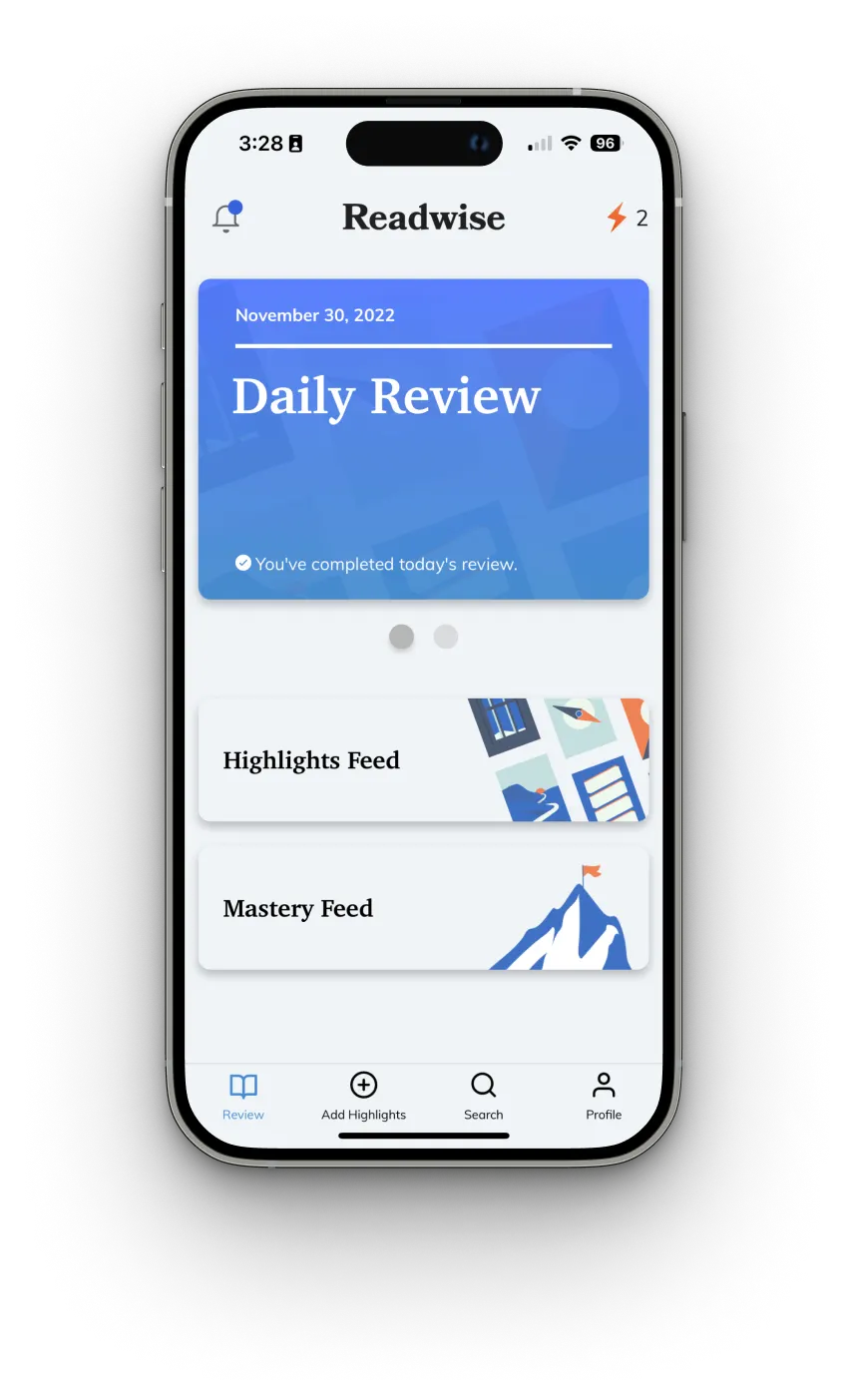
Loved by founders professionals academics

Readwise has completely redesigned the read-it-later app. It's gorgeous and blazingly fast. In many ways, it's the Superhuman of reading — you won't want to read anywhere else.
Rahul Vohra
Founder, Superhuman

I spend my entire day reading, researching, & writing and Readwise is the reading tool I've been waiting for. The perfect complement to my writing workflow. Absolute game changer.
Packy Mccormick
Founder, Not Boring

The Reader is another home run from the Readwise team. Having sampled all the reader apps, it's refreshing to finally find the one that fits into my knowledge workflow!
Peter Duffy
Innovation Lead, DWF Law

The Readwise reading app is the first read-it-later app that enables a true workflow for serious readers. As an ex-Pocket / Instapaper power user, it's hard to imagine ever going back.
Creative Technology Lead, Pinterest

I've searched far and wide for the perfect reading app. Even though it's still in beta, Reader has already replaced my previous read-it-later app. (And I always think twice about switching!)
Eliška Šestáková
Professor, Czech Technical University

In addition to building an incredible reading experience, the Readwise team is constantly iterating on user feedback and delivering the fastest product updates I have ever seen.
Akiff Premjee
Medical Student, Tufts University
Reader will change the way you read
Keyboard-based reading.
Glide through your documents without ever using the mouse. Keyboard-based reading enables you to navigate, highlight, and annotate with grace.
Ghostreader
Ghostreader is your GPT-3 copilot of reading. Ask questions. Define terms. Simplify complex language. And so much more.
Blazingly fast full text search
Find whatever you're looking for. Even if you only remember a single word. Even offline.
Text to speech
Listen to any document narrated with the lifelike voice of a real human.
Upgrade your reading workflow.
Eliminate multiple apps., flexible software fits your unique needs.
Your personal interests, your professional projects, your way of doing things — they're unique. Reader is your home base for the varied documents in your life, customizable to match the way your brain works. PDFs for work, articles for your newsletter, and ebooks for pleasure all live comfortably side-by-side. No more juggling dozens of apps.
Integrated with your favorite tools
Your annotations should flow effortlessly from your reading app into your writing tool of choice. Instead you waste hours reformatting, reorganizing, and repeating. Reader eliminates this hassle.

Reader seamlessly connects to Readwise which exports to Obsidian, Notion, Roam Research, Evernote, Logseq, and more
Reader is built API-first: roll your own solutions and integrate your tools using our API.
Reader automatically syncs to Readwise: making it easy to revisit and learn from your highlights with Daily Review.
Read anywhere, anytime
Access all of your content from any of your devices with everything in sync. Even offline. Reader syncs across a powerful, local-first web app, iOS app, and Android app. You can even highlight the open web with the Reader browser extensions.
Loved by autodidacts engineers technologists

Having tried every read-it-later app out there, I cried tears of joy once I got my hands on Reader. It's the smoothest experience to turn highlights into insights. Plus, I can finally highlight images!
Ramses Oudt
Founder, RoamStack

Readwise is the reading, highlighting, archiving tool I've been long for: the Superhuman of reading. I was a top 1% Pocket user for many years and switched instantly.
Eric Jorgenson
Author, Almanack of Naval Ravikant

Reader is the first reading app that helps you process information rather than hoard it. The keyboard nav and minimalist interface lead you into a deep flow state. A must for any knowledge worker!
Nicole Van Der Hoeven
Developer Advocate, k6

Tom Taubkin
EIR, Diagram

Communications, Stripe

Trevor McKendrick
Founder, Seis
Content overload, conquered.
Our read-it-later apps should improve over time. Instead, they worsen. Why? Because we save more stuff than we have time to deal with. We fell in love with Superhuman's fun, game-like triage for clearing our email inboxes of clutter. So we've built the same for reading. Weed your digital garden with delight.

Frequently asked questions
Once Reader officially exits beta, we intend to reprice Readwise/Reader for new subscribers thereafter. Pricing is really hard and complex so we candidly haven't figured out the exact plans yet. But regardless, we don't intend to increase pricing on existing full subscribers at that time. This means that if you subscribe while Reader is in beta, you'll get lifetime access for the price you are now paying.
Yes! Reader is available on iOS and Android as well as a local-first web app. The entire experience is cross-platform meaning all data is continuously synced between all your devices. Please note that “local-first web app” does not refer to a native app you install on your computer, but you can install the app as a Chrome app or with a Safari wrapper to get native-like experience.
Yes! You can import your existing read-it-later library from Instapaper, Pocket, and a handful of others. You can also import your existing RSS feeds from other feed readers using OPML.
Right now, you can think of Reader as another reading app that integrates with Readwise (albeit seamlessly because they share a database). Every highlight you make in Reader instantly syncs with Readwise and then from Readwise to your note-taking apps. Over time, the vision is to create a unified experience between Readwise and Reader within Reader. Regardless, if you have a Readwise Full plan, you get access to both apps.
Experience the future of reading
Click "Sign up" above to accept Readwise's Terms of Service & Privacy Policy .
Readwise is free for the first 30 days, after which it costs a small monthly fee.
Welcome back!
Need some more time.
With the release of Reader, we are offering you another opportunity to try Readwise. After this free trial, you'll need a Readwise Full subscription to continue using Reader.
You are using an outdated browser. Please upgrade your browser to improve your experience.
Safari's Reader mode is improved in iOS 18, even without Apple Intelligence

The new Reader options on iPhone
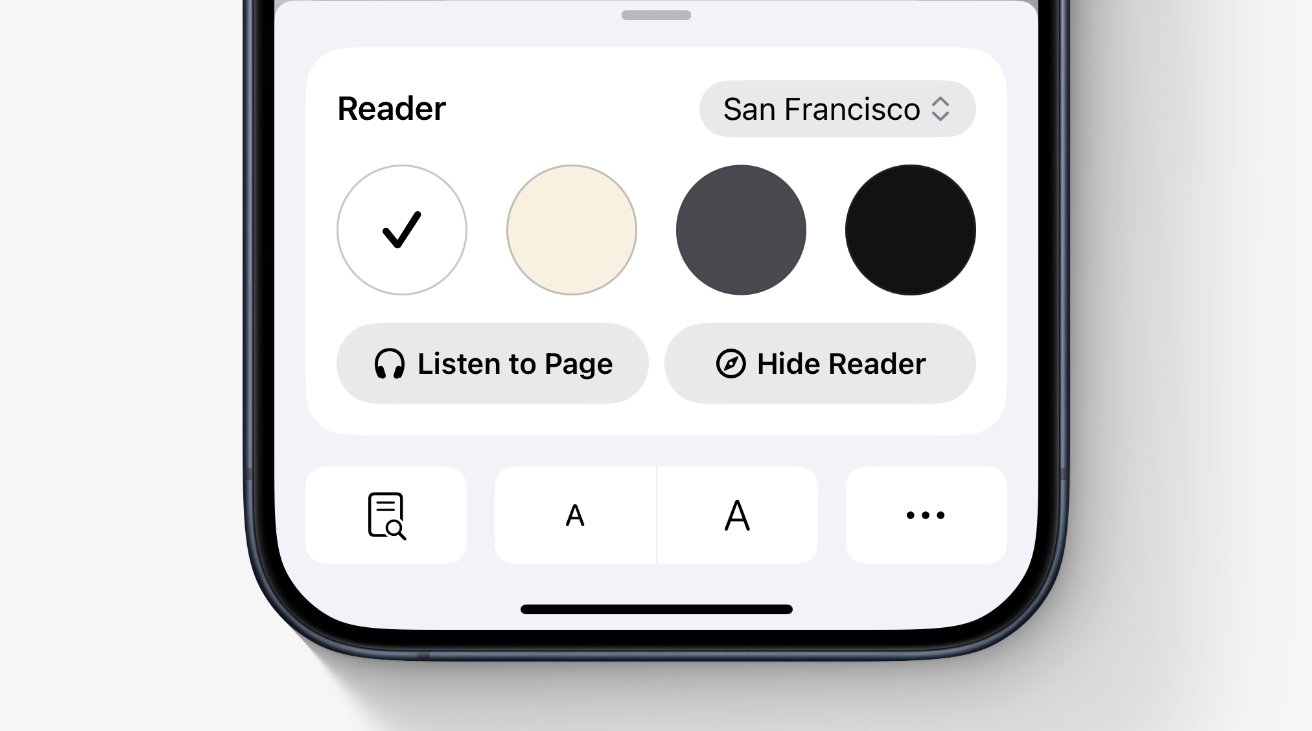
Apple has announced that Safari 's Reader mode, where all website distractions are removed so that you can read articles more easily, will be getting two specific updates. They are an automatic summary of an article, and also a contents page for longer ones — both done by Apple Intelligence.
There is no Apple Intelligence in the first developer beta of any of Apple's OSes, but Safari's Reader mode has been improved. While AppleInsider will revisit Reader after Apple Intelligence arrives, there are already new benefits to the feature including quicker access to options.
What Reader does in Safari
On a website that chiefly has articles or text on it, you can turn on Safari's Reader mode. This switches to a view of the web page that aimed to provide solely the text and images, no ads or videos, no pop-ups, and so on.
What hasn't changed, and can't, is that this is Safari's best attempt at cutting out distractions for you. Depending on the site, it may fail to work at all, for instance.
Or commonly it will show what appears to be a complete website page, but the site has really split its article up over many more pages.
The Apple Intelligence summary and contents page is going to be an attempt to address some of these issues.
But for now, Apple has made going into Reader mode quicker, and made it easier to customize what you see when you're in it.
What's new in Reader on macOS Sequoia
- Browse to a website in Safari
- Click the new icon to the left in the address bar
- Click on Show Reader from the short pop-up menu
That short menu also includes the ability to change the zoom percentage on text, and to alter some website settings. It's also got the option tofind items on the page, though it's not clear why this is Find where the same function on iPhone and iPad is Search .
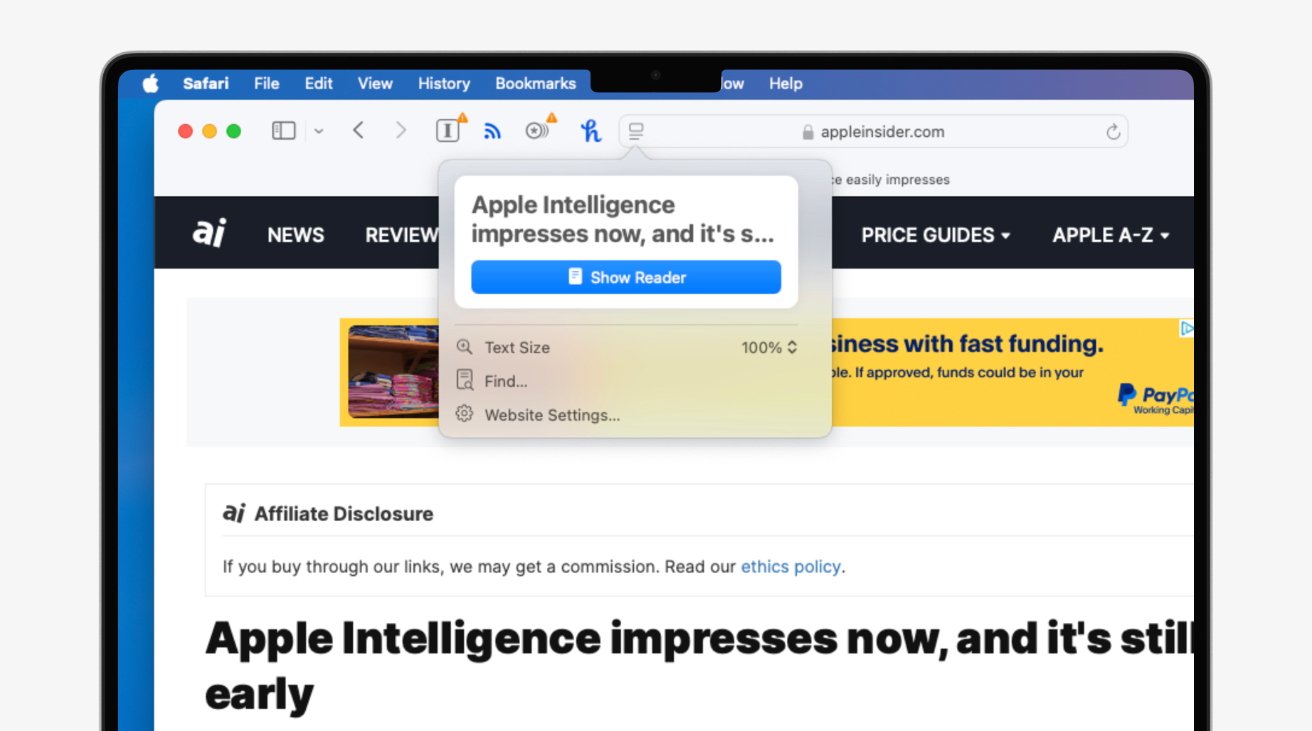
Once you've chosen Show Reader , you can click again on that new icon in the address bar. This now gives you a longer drop-down that adds font and page color options.
What's new in Reader on iOS 18 and iPadOS 18
- In Safari for iPhone or iPad, go to any primarily text-based website
- Tap the new icon in the address bar
- Choose Show Reader
- Tap the same address bar icon again
- Use Reader's new controls for font, size, color
- Or use Search within Reader
The font option is a further drop-down list on iPad and iPhone, while as with the Mac , the choice of color is a series of four buttons. There's white, sepia, gray, and black, and tapping on any of those changes the whole look of the page.
Also in this dropdown, there is now a Listen to Page option. Tap that to hear Siri read out all of the text.
Reader search and settings
Search and font size controls are now buttons in the top row of the drop-down menu on the iPhone and iPad. There's also an ellipses icon in that row, which gets you many more options.
Most of those are to do with Safari features, such as adding to favorites. But if you scroll toward the bottom, there is also an option called Use Reader Automatically .
If there is a site that you are forever turning to Reader mode to escape an ad barrage, turn this on. Whenever you visit this site, it will solely show you articles in Reader mode.
Note, though, that it does this with articles. You'll still see the normal view of a page like a news site's headlines one.
The last option that is always available, is Hide Reader . This turns off the feature and returns you to the original view of the site.
There is one more thing, which is only on the iPhone. It's called Manage Extensions, and will allow you to turn on or off an Safari extensions you have installed.
Those could include ad blockers, for instance, which might make a page more readable without going into Reader mode.
All of this sounds like a brute-force way to stop websites being paid by advertisers. When the site is so overloaded with pop-ups that it's hard to read, though, this will help.
It should also help with screen-readers for visually impaired readers.
Plus the forthcoming Apple Intelligence features like summarizing the page will mean you can determine quicker whether this is a site you want to read.
There are no Comments Here, Yet
Top stories.

B&H's MacBook Pro Mega Deal Zone knocks up to $550 off

Apple Intelligence impresses now, and it's still very early

M4 MacBook Pro upgrade could arrive by end of 2024

How Apple's Game Mode is expanding to iOS and iPadOS — and how to turn it off

Beats Solo Buds review: Apple's best wireless audio bargain yet

M4 Macs, iPhone 16, and more: What Apple has planned for the rest of 2024
Featured deals.

Apple's M3 Pro MacBook Pro plunges to $1,699
Latest news.
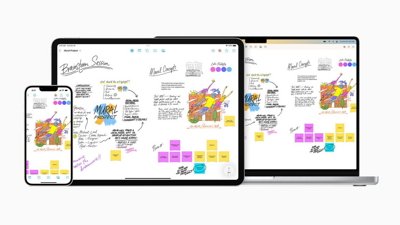
How to brainstorm and mind-map in Freeform
Apple's included Freeform app is a versatile tool for note-taking, doodles, collaborative planning, and much more. Here's how to use it as a mind-mapping tool for visualizing plans, projects, and ideas on your Mac, iPhone, and iPad.

Here's which features Apple changed ahead of their WWDC 2024 debut
Apple previewed a true multitude of OS features and AI-related improvements during WWDC that didn't quite align with leaks and rumors. Here's everything Apple changed and why.

How to use an original Apple Pencil with a new iPad
Despite all that Apple says, you can in fact use an original Apple Pencil with the company's latest iPad Pro and iPad Air — it just takes some work. Here's what to do.

Three Apple internal tools allegedly stolen following June server breach
A threat actor is claiming to have leaked source code for three internal Apple tools, in a supposed breach that Apple has yet to confirm actually happened.

Best Buy slashes Apple's iPad Air 5 to $399.99, save $200
Best Buy has issued a $200 price cut on multiple iPad Air 5 models, with prices dipping to as low as $399.99.

Apple is making a bigger drive for people to game on iOS 18 and iPadOS 18, but Game Mode can be annoying. Here's what it is, and how to turn it off.
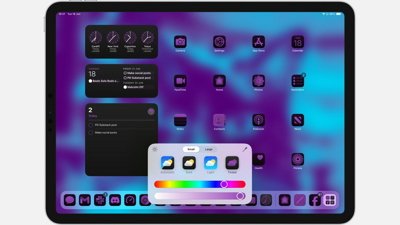
How to perfect your home screen with iPadOS 18 customization options
Apple has made it easier to customize and arrange your iPad home screen, with iPadOS 18 letting you rearrange icons and even tint them. Here's how to do it.
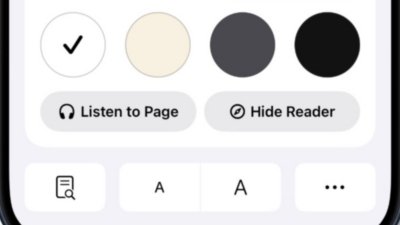
The headline Apple Intelligence improvements to Safari's Reader mode on iOS 18, iPadOS 18, and macOS Sequoia are not available yet, but the feature has still been updated.
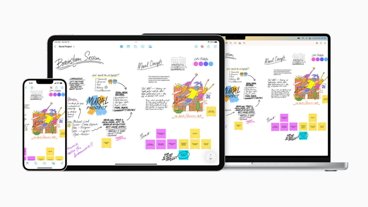
Latest Videos

Retro gold rush: which emulators are on the App Store, and what's coming

Best features in watchOS 11 for Apple Watch

Our favorite features so far in iOS 18 from Control Center to Genmoji
Latest reviews.

Dockcase Studio Smart USB-C Hub 8-in-1 Review - Powerful hub with perplexing features.

PNY Elite-X Type-C Drive review: Small size, huge convenience

{{ title }}
{{ summary }}
Looks like no one’s replied in a while. To start the conversation again, simply ask a new question.
How to Export as PDF from Safari's Reader View retaining font and images?
Having a web page in Reader View, doing an Export as PDF… often strips out images displayed in Reader View and changes the typeface to the system default rather than the typeface I selected for the Reader View. How can I get the saved PDF to look like the displayed Reader View? I can export the un-cleaned regular page view, but then all the extraneous material is included in the PDF.
Monterey 12.3.1.
iMac Line (2012 and Later)
Posted on Apr 14, 2022 8:32 PM
Similar questions
- Safari Reader Mode saves pdf w/too large a font I've seen other similar questions but thought it worth asking again since a pervious query was a few years back. I like to use the reader mode on some web pages that have a glut of distracting ads. As well, I like to save the article as a pdf. But I can find no way to reduce the obese size of the default font when saving as pdf. It probably ends up somewhere around a 36. My options are to save/print 12 pages of the website page with all the ads, or 12 pages of the article at gigantic font. What I'm after is the 4 pages of the article, as pdf and to print if needed. Is there a tweak to do? Thanks in advance, Paul 1584 6
- Styling PDF files from the Pages app I create documents with Pages (the latest version). I then select Export > PDF, with no ability to style it (e.g., setting the font size and having the document open with its opening line at the top of the page). The PDF gets created. However, when it opens on my iMac and online, (a) the font size is very large, and (b) the document's opening line can't be seen because the document opens to a point between pages 1 and 2. This is especially bothersome when my PDF files are opened on my website. ( ; - ( How/where can I style the PDF accordingly before it gets created? Thanks, in advance, for your assistance going forward. Warren 224 13
- view a pdf in safari according to this page https://support.apple.com/guide/safari/see-a-pdf-ibrw1090/mac "Safari has a built-in PDF reader that automatically displays PDF documents right in the browser window." yet when I drag a PDF from my desktop into a blank Safari tab, it is not displayed and instead the window says "Safari can't open the page" 724 3
Loading page content
Page content loaded
Apr 15, 2022 11:24 AM in response to ross97401
You might try printing and selecting the option to print to pdf file to see if that pdf file looks more correct. Some of what you are encountering is website dependent, as some web sites seem to exclude some or sometimes all images when Export as PDF is chosen. Printing to pdf SOMETIMES works better. Sometimes also, stubborn web sites will work better for this when using Firefox or Chrome, which you can also try.

Flexi PDF Reader
Description.
- Skip to primary navigation
- Skip to main content
- Skip to primary sidebar
- Skip to footer
Don't Miss a Post! Subscribe
- Guest Posts

- Educational AI
- Edtech Tools
- Edtech Apps
- Teacher Resources
- Special Education
- Edtech for Kids
- Buying Guides for Teachers

Educators Technology
Innovative EdTech for teachers, educators, parents, and students
Google Scholar PDF Reader Review
By Med Kharbach, PhD | Last Update: June 6, 2024
A few days ago, while I was browsing research papers on Google Scholar, I received a recommendation for a handy Chrome extension called Google Scholar PDF Reader. Intrigued, I decided to try it out and was pleasantly surprised—I couldn’t believe I hadn’t discovered this tool earlier! If you’re an avid Google Scholar user like me, this extension is a game-changer.

Once installed, it resides in the top right corner of your Chrome browser. If it doesn’t appear right away, check your installed extensions and click the pin icon next to Google Scholar PDF Reader to make it visible in your taskbar. With the Google Scholar PDF Reader, you gain access to a range of features that make managing and reading PDFs a breeze.
Google Scholar PDF Reader Features
One of the best features of Scholar Reader is its ability to preview references as you read. By clicking on in-text citations, you can view a summary of the reference and quickly locate the PDF, saving you time and effort. The extension also allows you to scan a table of contents with ease.
Whether you’re interested in methods, results, or the discussion section, simply click on the relevant section to jump straight to it. Additionally, in-text figure mentions are interactive—clicking on them will display the figure, and you can use the back button to seamlessly return to your reading.
Scholar Reader also offers different customizable viewing modes, including light, dark, and night modes to suit different lighting conditions. It streamlines the process of copying and pasting common citation formats, so you don’t have to leave the paper you’re reading. Furthermore, you can save articles directly to your Scholar Library, making it convenient to read or cite them later. These features collectively make Scholar Reader an invaluable tool for anyone who frequently works with academic PDFs.
Related: Best Google Scholar Alternatives
I hope you have found this overview of the Google Scholar PDF Reader insightful. If you haven’t already installed this extension, I highly recommend giving it a try. Its seamless integration with Chrome and powerful features can significantly enhance your academic research experience.

Join our mailing list
Never miss an EdTech beat! Subscribe now for exclusive insights and resources .

Meet Med Kharbach, PhD
Dr. Med Kharbach is an influential voice in the global educational technology landscape, with an extensive background in educational studies and a decade-long experience as a K-12 teacher. Holding a Ph.D. from Mount Saint Vincent University in Halifax, Canada, he brings a unique perspective to the educational world by integrating his profound academic knowledge with his hands-on teaching experience. Dr. Kharbach's academic pursuits encompass curriculum studies, discourse analysis, language learning/teaching, language and identity, emerging literacies, educational technology, and research methodologies. His work has been presented at numerous national and international conferences and published in various esteemed academic journals.

Join our email list for exclusive EdTech content.
View in English
Tools, documentation, forums, videos, and more.
Safari Technology Preview
Get a sneak peek at upcoming web technologies in macOS and iOS with Safari Technology Preview and experiment with these technologies in your websites and extensions.
- Safari Technology Preview for macOS Sequoia Support for macOS 15 beta coming soon
- Safari Technology Preview for macOS Sonoma Requires macOS 14 or later
- Safari Technology Preview for macOS Ventura Requires macOS 13 or later
- Release Notes
June 5, 2024
Safari beta
Try out the next version of Safari for upcoming macOS releases. To access the latest beta versions of Safari, sign in with your Apple ID.
View downloads
Release Date
September 20, 2021
Guides and sample code
Get details on implementing web technologies with guides, reference, and sample code.
- Safari Web Extensions
- Apple Pay on the Web
- Security Keys
- Video Content in Safari
- More Safari Documentation
Watch and learn from our engineers as they show how to bring the latest web technologies to your websites on Safari.
- Watch Safari and Web Videos
Ask questions and discuss a variety of web development topics with Apple engineers and other developers.
- Apple Developer Forums
Featured web technologies
Safari extensions.
Safari extensions are a powerful way to add new features to Safari. They are built in Xcode with web technologies, such as HTML5, CSS3, and JavaScript and powerful native APIs. Now you can distribute and sell them through the App Store on Mac, iPhone and iPad.
- Meet Safari Web Extensions on iOS
- Explore Safari Web Extension improvements
- Converting a Web Extension for Safari
- Creating a Content Blocker
- Submit Your Extension
Universal links
Seamlessly link to content within your app or on your website in iOS, iPadOS, and macOS. With universal links, you can always give users the most integrated mobile experience, even when your app isn’t installed on their device.
- Universal Links
Smart App Banners
Make it easy for people to discover and download your app using iOS, iPadOS, and macOS. With Safari Smart App Banners, you can display a banner that provides a direct link to your app on the App Store, or opens the app if the user already has it installed. Smart App Banners integrate seamlessly and are easy to implement.
- Promoting Apps with Smart App Banners
HTTP Live Streaming (HLS)
Deliver streaming media to apps on iOS and iPadOS or HTML5-based websites using an ordinary web server.
- HTTP Live Streaming
Safari iCloud Keychain
Easily create more secure logins for users in iOS 15, iPadOS 15, and macOS Monterey or later using iCloud Keychain verification codes. Take advantage of verification codes, AutoFill, iCloud Keychain sync, and two-tap setup to simplify the multistep sign-in process.
- Secure login with iCloud Keychain verification codes
- Securing Logins with iCloud Keychain Verification Codes
- Safari Push Notifications
Use the Apple Push Notifications Service to send notifications to your website vistors, right on their Mac desktop — even when Safari isn’t running. These notifications display your website icon and notification text, which people can click to go right to your website.
- Certificates, Identifiers & Profiles
Introduced by Apple, WebKit is the most advanced rendering engine, drawing the web pages in Safari on iOS, iPadOS, and macOS.
- WebKit Open Source Project
Write automated tests to exercise web content in Safari to ensure a good user experience, and run those same tests against other browsers with a WebDriver-compliant driver.
- macOS WebDriver Commands for Safari 11.1 and earlier
- macOS WebDriver Commands for Safari 12 and later
- About WebDriver for Safari
- Testing with WebDriver in Safari
WebKit in Safari 18 beta">News from WWDC24: WebKit in Safari 18 beta
Jun 10, 2024
by Jen Simmons, Jon Davis, Karl Dubost, Anne van Kesteren, Marcos Cáceres, Ada Rose Canon, Tim Nguyen, Sanjana Aithal, Pascoe, and Garrett Davidson
Web apps for Mac
Safari extensions, spatial media, web inspector, deprecations, bug fixes and more, help us beta test.
The last year has been a great one for WebKit. After unveiling Safari 17 beta at WWDC23, we’ve shipped six releases of Safari 17.x with a total of 200 new web technologies. And we’ve been hard at work on multiple architectural improvement projects that strengthen WebKit for the long-term.
Now, we are pleased to announce WebKit for Safari 18 beta. It adds another 48 web platform features, as well as 18 deprecations and 174 bug fixes. Test it today on iOS 18 beta, iPadOS 18 beta, visionOS 2 beta, and macOS Sequoia beta.
Safari 18 for visionOS 2 beta adds support for immersive WebXR . Now you can create fully immersive experiences and deliver them on the web to people using Apple Vision Pro . Safari on visionOS 2 beta supports immersive-vr sessions. WebXR scenes are displayed using hardware-accelerated graphics driven by WebGL .

Safari for visionOS 2 beta supports the new WebXR transient-pointer input mode. It lets you make the most of natural input on visionOS, and allow your users to interact with a look and a pinch.

If you want to animate a 3D model of the user’s hands, Safari for visionOS 2 beta also includes support for WebXR hand tracking . To ensure privacy, permission to allow hand tracking will be requested from users at the start of their WebXR session.
Learn all about WebXR on visionOS 2 beta by watching Build immersive web experiences with WebXR at WWDC24, available Wednesday June 12. And learn more about transient-pointer input mode by reading Introducing natural input for WebXR in Apple Vision Pro .
View Transitions
WebKit added support for the View Transitions API in Safari 18 beta. It provides an optimized browser API to animate elements from one state to another. Safari supports the CSS View Transitions Module Level 1 specification that adds new CSS properties and pseudo-elements for defining transition animations, along with a new browser API to start transition animations and react to different transition states. It works by capturing the current (old) state of the page and applying an animated transition to the new state. By default, the browser applies a cross-fade between the states.
Call the document.startViewTransition() method to initiate the capture. You can pass a callback function as the first argument to make DOM state changes between the old and new captures. The method returns a ViewTransition object which contains promises that can be used to track when the view transition starts or ends.
Once the states are captured, a pseudo-element tree is built which can be targeted with CSS, allowing you to modify the CSS animations used for the transitions. The animations out of the old page state and into the new page state can be modified via the ::view-transition-new(*) and ::view-transition-old(*) selectors. You can also ask the browser to independently track state changes for a specific element by naming it with the CSS view-transition-name property. You can then use the pseudo-element to customize animations for it.
The example below demonstrates state management with tabbed navigation. Each tab view has a custom transition animation out and a subtly different animation in, while the tabs themselves rely on the default page transition.
Style Queries
WebKit for Safari 18 beta adds support for Style Queries when testing CSS Custom Properties. Similar to how developers can use Sass mixins, Style Queries can be used to define a set of reusable styles that get applied as a group.
Here, if the --background custom property is set to black, then certain styles will be applied — in this case to make the headline and paragraph text color white.
Don’t forget to pay attention the HTML structure. By default, Style Queries reference the styles on the direct parent element. You can create a different reference through the use of Container Query names.
currentcolor and system color keywords in Relative Color Syntax
Support for Relative Color Syntax shipped in Safari 16.4 . It lets you define colors in a more dynamic fashion, creating a new color from an existing color. The value lch(from var(--color) calc(L / 2) C H) for instance uses the lch color space to take the variable --color and calculate a new color that’s half its lightness, calc(L / 2) .
Now, starting in WebKit for Safari 18 beta, you can reference the currentcolor or a system color keyword as you define the new color. For example, this code will set the background color to be the same color as the text color, only 4 times lighter, as calculated in the oklch color space.
Being able to reference system color keywords opens up another world of options. System colors are like variables that represent the default colors established by the OS, browser, or user — defaults that change depending on whether the system is set to light mode, dark mode, high contrast mode, etc. For example, canvas represents the current default background color of the HTML page, while fieldtext matches the color of text inside form fields. Find the full list of system colors in CSS Color level 4 .
Relative Color Syntax lets you define dynamic connections between colors in your CSS, lessening the need to control color through variables in a tightly-regimented design system. Learn more about Relative Color Syntax by watching this portion of What’s new in CSS from WWDC23.
Animating display
WebKit for Safari 18 beta adds support for transition animation of the display property.
Many developers are excited to use @starting-style along with transition-behavior and display: none interpolation. WebKit for Safari 17.4 added general support for transition-behavior , including transition-behavior: allow-discrete . WebKit for Safari 17.5 added support for @starting-style , letting you define starting values for transitioning an element as it’s created (or re-created). Now in WebKit for Safari 18 beta, you can use these features together to transition the display property.
Shaping interaction regions on visionOS
As a web developer, you’re very familiar with how link styling works on the web. For decades you’ve been able to use CSS to style text-decoration , color and more for :link , :hover , :active , and :visited states. You’ve also been able to adjust the size of the invisible tap target through use of padding.
Apple Vision Pro adds a new dimension to how links work — tap targets are visible on visionOS. Anytime a user looks at an interactive element, it’s highlighted to let them know that it can be tapped. And you as a designer or developer can intentionally design how an interaction region looks. You may want to add padding, for instance, or even a rounded corner to the otherwise invisible box.
Now in Safari in visionOS 2 beta, when you use CSS clip-path to change the shape of tappable area of a link, the visible interaction region will change shape as well. Interactive UI elements built with SVG will also be highlighted with the proper shape. Learn more by watching Optimize for the spatial web at WWDC24, available Tuesday June 11.
Backdrop Filter
Originally shipped in Safari 9.0, backdrop filter provides a way to apply graphics effects to the content behind a particular element. You can apply backdrop-filter to a headline, for example, and everything behind the headline will be blurred, or have decreased saturation, or increased contrast. Any of the filter functions from SVG can be used — blur() , brightness() , contrast() , drop-shadow() , grayscale() , hue-rotate() , invert() , opacity() , saturate() , and sepia() .
For many years, backdrop filter only worked in Safari. It was available when you prefixed the property with -webkit-backdrop-filter . Now, starting in Safari 18 beta, you don’t need the prefix. We also improved our implementation, fixing bugs and boosting interoperability.
This demo shows eight different filters and what you might do with each one alone. You can, of course, combine filters to create even more interesting results. With backdrop filter supported in Safari since 2015, Edge since 2018, Chrome since 2019, Samsung Internet since 2020, and Firefox since 2022, this is a great time to consider the kind of graphic design possibilities it enables.
safe in Flexbox
WebKit for Safari 18 beta adds support for the safe keyword for alignment in Flexbox. This provides a mechanism for refining how flex items overflow. Let’s look at an example of a simple navigation menu — a classic use of Flexbox.
The following CSS creates a simple layout that wraps when there’s not enough space on one line for the menu, while centering the items in the available space.

By default, justify-content: center will always keep the items centered, even when the content is overflowing the containing box. You might prefer, however, that the content not be centered when it overflows — being centered cuts off both the beginning and end of the word, making the content harder to understand when the overflow is not visible.

The safe keyword lets you change how alignment works when content overflows. The justify-content: safe center rule will instead start align any item that is overflowing, while continuing to center the items that are not overflowing.
If you want to override the safe keyword, you can use unsafe . The justify-content: unsafe center rule will do the same thing as justify-content: center . The unsafe keyword has been supported in WebKit for Safari for quite some time.
Content visibility
WebKit for Safari 18 beta adds support for content-visibility . This property controls whether or not an element renders its contents in a fashion that’s useful for making performance optimizations. It lets you communicate to the browser that certain portions of the page will likely be initially offscreen, and suggest they be omitted from layout and rendering. This can make the page load faster.
Last year , we added support for web apps in macOS Sonoma. You can add any website to your dock — whether or not it was built with a Manifest file, Service Worker, or other technology to customize the web app experience. Go to the site in Safari, then File > Add to Dock… where you can customize the icon, change the name, and even clean up the URL. Then, just click on the web app icon in your Dock, and it will open as an app.
This year brings two improvements to web apps on Mac.
Opening links
macOS Sequoia beta adds support for opening links directly in web apps. Now, when a user clicks a link, if it matches the scope of a web app that the user has added to their Dock, that link will open in the web app instead of their default web browser.
For example, imagine you have added MDN Web Docs to the Dock. Then a colleague sends you a link to an MDN page in Messages, Mail, Slack, Discord, IRC, or any non-browser application on your Mac. Now when you click on that link, it will open in the MDN Web Docs web app instead of your default browser.
Clicking a link within a browser will maintain the current behavior. This feature only affects links opened elsewhere. (When a user is in Safari, clicking on a link that matches the scope of a web app that is added to Dock, they will see an “Open in web app” banner, unless they have previously dismissed the banner.)
By default, this behavior applies when the link matches the host of the web page used to create the web app. As a developer, you can refine this experience by defining the range of URLs that should open in the web app with the scope member in the web app manifest .
Extension support
Now you can personalize web apps on Mac with Safari Web Extensions and Content Blockers. Navigate to the web app’s Settings menu to access all your installed Content Blockers and Web Extensions. Any enabled in Safari will be on by default in the web app. Each web app is uniquely customizable, just like Safari profiles.
Safari 18 beta also adds support for Mobile Device Management of extension enabled state, private browsing state, and website access on managed devices. This means schools and businesses that manage iOS, iPadOS, or macOS devices can now include the configuration of Safari App Extensions, Content Blockers, and Web Extensions in their management.
One of the amazing experiences you can have on Apple Vision Pro is looking at spatial photos and panoramas. When you open the Photos app in visionOS, you see a montage of your photos. Tap an image, it appears alone in a floating frame in front of you, while the rest of the app disappears.

A spatial photo appears at just the right height and viewing angle to make it feel like you’ve gone back to a moment in time. A second tap of the UI breaks it out of the frame, as it grows and becomes even more immersive. Similarly, a panorama floats in a frame on first tap. Then on second tap of the UI, it expands to wrap all around you, creating a fully immersive experience.
Now in Safari 18 for visionOS 2 beta, you can use the Fullscreen API to create the same experience on the web. You can embed the photo in a web page, and provide the ability to tap. The photo will pop into a floating frame as the Safari window disappears. Then when the user taps on the spatial photo or panorama UI that visionOS provides, the photo will further expand to create a fully immersive experience. When they exit the image, the Safari window will return.
Let’s walk through how to support experiencing a spatial photo or panorama on the web using Fullscreen API. First, include the image on your web page using any of the techniques we’ve used on the web for years. Here, we can embed a flattened panoramic photo into the web page using simple HTML.
Then using JavaScript, we’ll trigger .requestFullscreen() on tap. Perhaps like this.
You could, of course, create your own UI for the user to tap, rather than making the entire photo the tap target.
Spatial images work just the same, although it’s likely we want to provide fallbacks for browsers that do not support HEIC files . We can do so with the picture element.
Spatial images are stereoscopic, with both a left and right channel. In Safari, when the image is embedded in the web page, the browser will show the left channel. And there’s no need to worry about providing a fallback of any sort for Safari on macOS, iOS, or iPadOS — the stereoscopic HEIC file works great.
This technique will also cause images to go fullscreen in any browser that supports Fullscreen API. Learn more about adding panorama and spatial photos to your websites by watching Optimize for the spatial web at WWDC24, available Tuesday June 11.
Writing Suggestions
At last year’s WWDC, Apple unveiled inline predictive text on iOS, iPadOS, macOS and more. It helps users input text faster by predicting what they might be typing and finishing the word, phrase or even a whole sentence when the user taps the space bar. Now, WebKit for Safari 18 beta on iOS, iPadOS, visionOS, macOS Sequoia and macOS Sonoma brings inline predictive text to the web.
While inline predictive text makes for a fantastic, personalized user experience, there might be specific situations on the web where it’s better to not have predictions. WebKit for Safari 18 beta on iOS, iPadOS, visionOS, macOS Sequoia and macOS Sonoma gives web developers the opportunity to disable inline predictions through the writingsuggestions attribute. By default, writing suggestions is set to true. You can turn off the capability by including the writingsuggestions="false" attribute on any type of text input field.
WebKit for Safari on iOS 18 beta adds haptic feedback for <input type=checkbox switch> . This means, now when a user taps a switch control on iPhone, a single tap is felt — just like how toggling a switch feels in Settings app on iOS. Try this demo to see what it’s like.
Date and time inputs
WebKit for Safari 18 beta on macOS improves accessibility support for date and time input field types. Now <input type="date"> , <input type="datetime-local"> , and <input type="time"> elements work properly with VoiceOver.
Usually elements have the labels they need, but sometimes there is no text label for a particular button or UI. In this situation, ARIA can be used to provide an accessible label. The aria-label attribute provides names of labels while aria-roledescription provides the description for the role of an element.
On very rare occasions, you may need to override aria-label or aria-roledescription to provide different names or descriptions specifically for braille. The aria-braillelabel and aria-brailleroledescription attributes provide such an ability. They exist to solve very specific needs, including educational contexts where the site needs to render the specific braille table dot pattern. If you do use braille-related ARIA attributes, be sure to test them using a braille reader. If in doubt, relying on the accessible name from content or aria-label / aria-roledescription is almost always the better user experience . WebKit has supported these ARIA attributes for years.
Now, WebKit for Safari 18 beta adds support for the ariaBrailleLabel and ariaBrailleRoleDescription element reflection properties. These make it possible to get and set the aria-braillelabel and aria-brailleroledescription ARIA attributes on DOM elements directly via JavaScript APIs, rather than by using setAttribute and getAttribute .
Watch video without distractions in Viewer for Safari 18 beta on macOS.
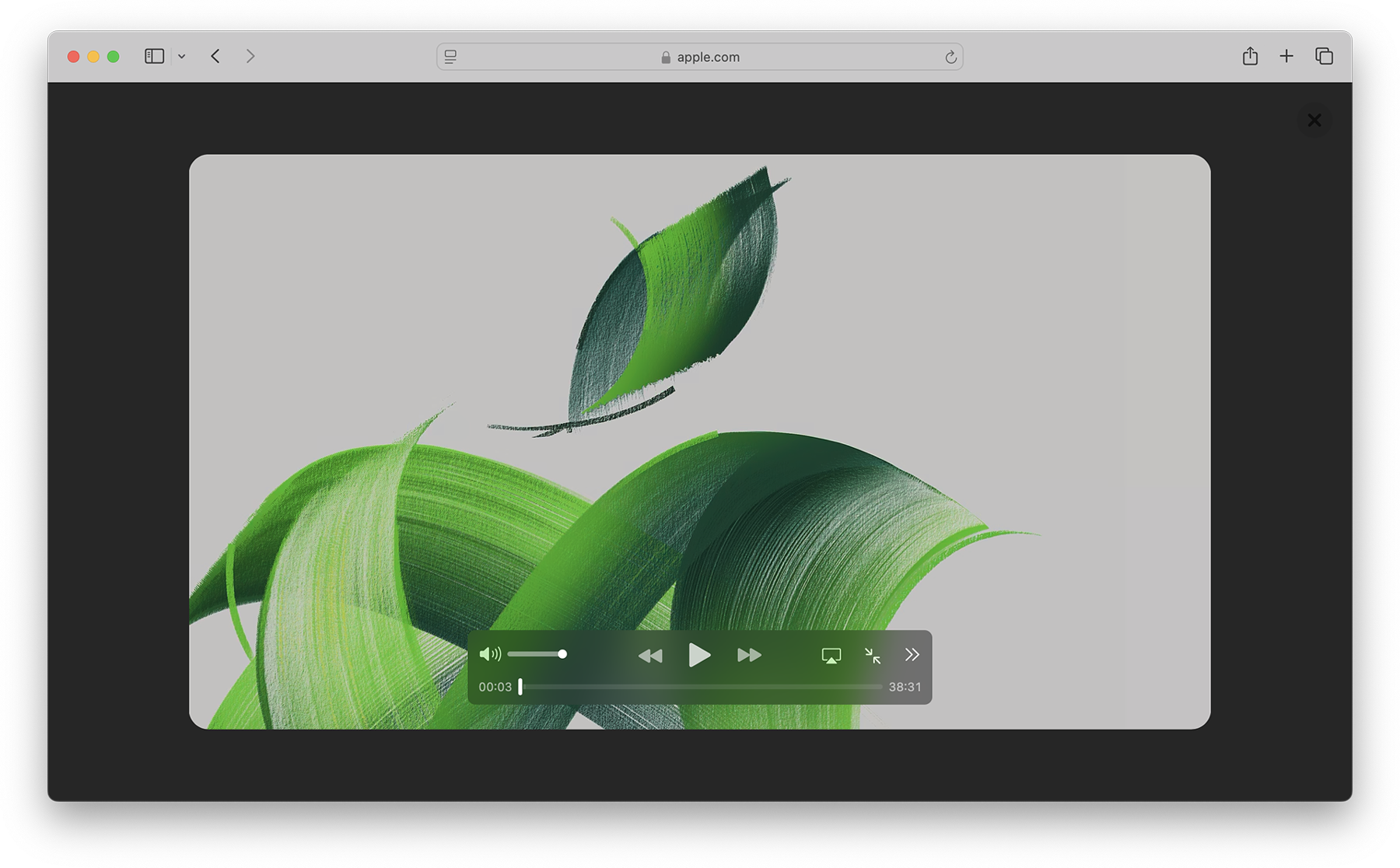
When you play in Viewer, the video fills the Safari window, while providing full access to system playback controls. Then it automatically enters picture-in-picture anytime you switch tabs, close the window, or occlude the web page with another window. Look for Video Viewer in the new page menu in Safari whenever you are on a web page with a prominent video element.
Video on visionOS

Managed Media Source
WebKit for Safari 18 beta adds Workers support for both Managed Media Source (MMS) and Media Source Extensions ( MSE ). This can be especially helpful on complex websites that want to ensure continuous and smooth video playback even when other site activity (such as live commenting) causes a very busy main thread. You can see the performance difference in this demo .
WebKit for Safari 18 beta adds support for the WebRTC HEVC RFC 7789 RTP Payload Format. Previously, the WebRTC HEVC used generic packetization instead of RFC 7789 packetization. This payload format provides a new option for improving videoconferencing, video streaming, and delivering high-bitrate movies and TV shows.
WebKit for Safari 18 beta adds support for MediaStreamTrack processing in a dedicated worker. And it adds support for missing WebRTC stats.
Two years ago at WWDC22, we announced support for passkeys — a groundbreaking industry-standard way to login to websites and app services. Passkeys provide people with an extremely easy user experience, while delivering a profound increase in security. To learn more, watch Meet Passkeys or read Supporting passkeys .
WebKit for Safari 18 beta adds support for three new features as we continue to improve passkeys. First, Safari 18 beta adds support for using mediation=conditional for web authentication credential creation. This allows websites to automatically upgrade existing password-based accounts to use passkeys. Learn more by watching Streamline sign-in with passkey upgrades and credential managers at WWDC24, available on Tuesday, June 11.
Second, WebKit for Safari 18 beta adds support for using passkeys across related origins. This lets websites use the same passkey across a limited number of domains which share a credential backend.
And third, WebKit for Safari 18 beta adds support for the WebAuthn prf extension. It allows for retrieving a symmetric key from a passkey to use for the encryption of user data.
WebKit for Safari 18 beta adds support for secure HTTPS for all images, video, and audio by upgrading passive subresource requests in mixed content settings. This means that if some files for a website are served using HTTPS and some are served using HTTP (known as “mixed content”), all images and media will now be auto-upgraded to HTTPS, in adherence with Mixed Content Level 2 .
WebKit for Safari 18 beta adds support for Unicode 15.1.0 characters in RegExp. Unicode 15.1 added 627 characters, bringing the total of characters to 149,813. Now, these new characters can be used in regular expressions.
WebKit for Safari 18 beta also adds support for the v flag with RegExp.prototype[Symbol.matchAll] . providing more powerful ways to match Unicode characters, as specified in the ECMAScript 2024 standard.
For example, you can now specify to only match on Latin characters, while avoiding matching on Cyrillic script characters.
Or split a string matching on Emojis.
WebKit for Safari 18 beta adds support for URL.parse() , a way to parse URLs which returns null rather than an exception when parsing fails.
WebKit for Safari 18 beta expands Declarative Shadow tree support by adding the shadowRootDelegatesFocus and shadowRootClonable IDL attributes to the <template> element. It also adds the shadowRootSerializable attribute and shadowRootSerializable IDL attribute to the <template> element, enabling those using Declarative Shadow roots to opt into making them serializable. Serializing can be done through the new getHTML() method that has been added at the same time.
WebKit for Safari 18 beta adds support for PopStateEvent ’s hasUAVisualTransition , indicating whether the user agent has a visual transition in place for the fragment navigation.
WebKit for Safari 18 beta adds support for subresource integrity in imported module scripts, which gives cryptographic assurances about the integrity of contents of externally-hosted module scripts.
WebKit for Safari 18 beta adds support for the bytes() method to the Request, Response , Blob , and PushMessageData objects. This replaces the need for web developers to call arrayBuffer() , which can be difficult to use, and wraps the result in a Uint8Array . Calling bytes() is now the recommended way going forward when you need to access the underlying bytes of the data these objects represent.
WebKit for Safari 18 beta adds support for feature detecting text fragments by exposing document.fragmentDirective . Note that the returned object (a FragmentDirective ) doesn’t provide any functionality, but it’s helpful if you need to know if Fragment Directives are supported by the browser.
WebKit for Safari 18 beta adds support for the willReadFrequently context attribute for the getContext() method. It indicates whether or not a lot of read-back operations are planned. It forces the use of a software accelerated 2D or offscreen canvas, instead of hardware accelerated. This can improve performance when calling getImageData() frequently.
WebKit for Safari 18 beta extends 2D canvas support for currentcolor . It can now be used inside color-mix() or Relative Color Syntax. Here currentcolor will default to the computed color property value on the canvas element.
WebKit for Safari 18 beta adds support for six new WebGL extensions:
- EXT_texture_mirror_clamp_to_edge
- WEBGL_render_shared_exponent
- WEBGL_stencil_texturing
- EXT_render_snorm
- OES_sample_variables
- OES_shader_multisample_interpolation
WebKit for Safari 18 beta adds support for fuzzy search code completion in the Web Inspector’s CSS source editor.
WebKit for iOS 18 beta, iPadOS 18 beta, visionOS 2 beta, and macOS Sequoia beta adds support for two new API — the Writing Tools API and an API to control adaptive image glyph insertion. Learn more about these API by watching Get started with Writing Tools and Bring expression to your app with Genmoji at WWDC24, both available Tuesday June 11.
WebKit for Safari 18 beta adds support for Apple Pay funds transfer.
While it’s rare to deprecate older technology from the web, there are occasions when it makes sense. We’ve been busy removing -webkit prefixed properties that were never standardized, aging media formats that were never supported in other browsers, and more. This helps align browser engines, improve interoperability, and prevent compatibility problems by reducing the possibility that a website depends on something that’s not a web standard.
WebKit for Safari 18 beta removes support for OffscreenCanvasRenderingContext2D ’s commit() method.
WebKit for Safari 18 beta deprecates support for a number of rarely used -webkit prefixed CSS pseudo-classes and properties — and even one -khtml prefixed property.
- -webkit-alt and alt properties
- :-webkit-animating-full-screen-transition pseudo-class
- :-webkit-full-screen-ancestor pseudo-class
- :-webkit-full-screen-controls-hidden pseudo-class
- :-webkit-full-page-media pseudo-class
- :-webkit-full-screen-document pseudo-class
- :-khtml-drag pseudo-class
WebKit for Safari 18 beta also deprecates support for the resize: auto rule. Support for the resize property remains, just as it’s been since Safari 4. The values Safari continues to support include : none , both , horizontal , vertical , block , inline , plus the global values. Early versions of CSS Basic User Interface Module Level 3 defined auto , but it was later written out of the web standard.
WebKit for Safari 18 beta also deprecates support for non-standardize WEBKIT_KEYFRAMES_RULE and WEBKIT_KEYFRAME_RULE API in CSSRule .
WebKit for Safari 18 beta removes support for the JPEG2000 image format. Safari was the only browser to ever provide support.
If you’ve been serving JPEG2000 files using best practices, then your site is using the picture element to offer multiple file format options to every browser. Safari 18 beta will simply no longer choose JPEG2000, and instead use a file compressed in JPEG XL, AVIF, WebP, HEIC, JPG/JPEG, PNG, or Gif — choosing the file that’s best for each user. Only one image will be downloaded when you use <picture> , and the browser does all the heavy lifting.
We have noticed that some Content Deliver Networks (CDN) use User Agent sniffing to provide one file to each UA, offering only JPEG2000 images to Safari — especially on iPhone and iPad. If you expect this might be happening with your site, we recommend testing in Safari 18 beta on both macOS Sequoia and iOS or iPadOS 18. If you see problems, contact your SaaS provider or change your image delivery settings to ensure your website provides fallback images using industry best practices.
If you notice a broken site, please file an issue at webcompat.com .
WebKit for Safari 18 beta removes support for non-standard VTTRegion.prototype.track .
WebKit for Safari 18 beta removes the last bits of support for AppCache.
When AppCache first appeared in 2009, in Safari 4, it held a lot of promise as a tool for caching web pages for use offline. It was imagined as “HTML5 Application Cache” back when HTML itself was being further expanded to handle more use cases for web applications. A developer could create a simple cache manifest file with a list of files to be cached. Its simplicity looked elegant, but there was no mechanism for cache busting, and that made both developing a site and evolving the site over time quite frustrating. AppCache also had security challenges. So new web standards were created to replace it. Today, developers use Service Workers and Cache Storage instead.
WebKit deprecated AppCache with a warning to the Console in Safari 11.0. Then in 2021, we removed support for AppCache from Safari 15.0, with a few exceptions for third-party users of WKWebView . Now we are removing those exceptions. This change to WebKit will only affect the rare web content loaded in older third-party apps that have JavaScript code which relies on the existence of AppCache related interfaces.
WebKit for Safari 18 beta removes the SVGAnimateColorElement interface.
WebKit for Safari 18 beta removes support for four non-standard Web APIs:
- KeyboardEvent.altGraphKey
- AES-CFB support from WebCrypto
- KeyboardEvent.prototype.keyLocation
- HashChangeEvent ’s non-standard initHashChangeEvent() method
In addition to all the new features, WebKit for Safari 18 beta includes work to polish existing features.
Accessibility
- Fixed role assignment for <header> inside <main> and sectioning elements.
- Fixed range input not firing an input event when incremented or decremented via accessibility APIs.
- Fixed setting aria-hidden on a slot not hiding the slot’s assigned nodes.
- Fixed comboboxes to expose their linked objects correctly.
- Fixed time input accessibility by adding labels to subfields.
- Fixed aria-hidden=true to be ignored on the <body> and <html> elements.
- Fixed datetime values being exposed to assistive technologies in the wrong timezone.
- Fixed time control accessibility by adding a label to the meridiem component.
- Fixed wrong datetime value being exposed to assistive technologies for datetime-local inputs.
- Fixed ignored CSS content property replacement text when it is an empty string.
- Fixed the computed role for these elements: dd , details , dt , em , hgroup , option , s , and strong .
- Fixed hidden elements targeted by aria-labelledby to expose their entire subtree text, not just their direct child text.
- Fixed accessible name computation for elements with visibility: visible inside a container with visibility: hidden .
- Fixed updating table accessibility text when its caption dynamically changes.
- Fixed updating aria-describedby text after the targeted element changes its subtree.
- Fixed the transition property to produce the shortest serialization.
- Fixed the animation property to produce the shortest serialization.
Authentication
- Fixed navigator.credentials.create() rejects with “NotAllowedError: Operation Failed” after a conditional UI request is aborted.
- Fixed renaming DigitalCredential’s response attribute to data .
- Fixed setting the cancel flag once the cancel completes regardless of a subsequent request occurring.
- Fixed drawImage(detachedOffscreenCanvas) to throw an exception.
- Fixed OffscreenCanvas failing to render to the placeholder with nested workers.
- Fixed losing the contents layer of the placeholder canvas of OffscreenCanvas when switching off the tab.
- Fixed drawImage to not alter the input source or the destination rectangles.
- Fixed toggling the visibility on a canvas parent undoing the effect of clearRect() .
- Fixed the Canvas drawImage() API to throw an exception when the image is in broken state.
- Fixed setting white-space to a non-default value dynamically on a whitespace or a new line.
- Fixed turning text-spacing properties into font properties.
- Fixed custom counter styles extending disclosure-open and disclosure-closed to point to the correct direction in right-to-left.
- Fixed backface-visibility to create a stacking context and containing block.
- Fixed getComputedStyle() to work with functional pseudo-elements like ::highlight() .
- Fixed: Aliased :-webkit-full-screen pseudo-class to :fullscreen .
- Fixed: Aliased :-webkit-any-link to :any-link and :matches() to :is() .
- Fixed getComputedStyle() pseudo-element parsing to support the full range of CSS syntax.
- Fixed @supports to correctly handle support for some -webkit prefixed pseudo-elements that were incorrectly treated as unsupported.
- Fixed updating media-query sensitive meta tags after style changes.
- Fixed changing color scheme to update gradients with system colors or light-dark() .
- Fixed incorrect inline element size when using font-variant-caps: all-small-caps with font-synthesis .
- Fixed :empty selector to work with animations.
- Fixed preserving whitespace when serializing custom properties.
- Fixed updating style correctly for non-inherited custom property mutations.
- Fixed element removed by parent to end up losing the last remembered size.
- Fixed an incorrect difference between implicit and explicit initial values for custom properties.
- Fixed the contrast of Menu and MenuText system colors.
- Fixed keeping the shorthand value for CSS gap as-is in serialized and computed values.
- Fixed the style adjuster for @starting-style incorrectly invoking with a null element.
- Fixed excluding -apple-pay-button from applying to any element that supports appearance: auto and is not a button.
- Fixed missing color interpretation methods added to CSS color specifications.
- Fixed hsl() and hsla() implementation to match the latest spec changes.
- Fixed the implementation of rgb() and rgba() to match the latest spec.
- Fixed the hwb() implementation to match the latest spec.
- Fixed the remaining color types to be synced with the latest spec changes.
- Fixed carrying analogous components forward when interpolating colors
- Fixed applying the fill layer pattern for mask-mode .
- Fixed displayed datalist dropdown to sync its options elements after a DOM update.
- Fixed <select multiple> scrollbars to match the used color scheme.
- Fixed updating the input value when selecting an <option> from a <datalist> element.
- Fixed the value attribute not getting displayed in an input element with type="email" and the multiple attribute.
- Fixed the iOS animation for <input type=checkbox switch> .
- Fixed form controls drawing with an active appearance when the window is inactive.
- Fixed constructed FormData object to not include entries for the image button submitter by default.
- Fixed the properties of History to throw a SecurityError when not in a fully active Document.
- Fixed “about:blank” document.referrer initialization.
- Fixed parsing a self-closing SVG script element. It now successfully executes.
- Fixed RegExp.prototype.@@split to update the following legacy RegExp static properties: RegExp.input , RegExp.lastMatch , RegExp.lastParen , RegExp.leftContext , RegExp.rightContext , and RegExp.$1, ... RegExp.$9 .
- Fixed String.prototype.replace to not take the fast path if the pattern is RegExp Object and the lastIndex is not numeric. (
- Fixed spec compliance for Async / Await, Generators, Async Functions, and Async Generators.
- Fixed async functions and generators to properly handle promises with throwing “constructor” getter.
- Fixed return in async generators to correctly await its value.
- Fixed Symbol.species getters to not share a single JS Function.
- Fixed throwing a RangeError if Set methods are called on an object with negative size property.
- Fixed eval() function from another realm to not cause a direct eval call.
- Fixed eval() call with ...spread syntaxt to be a direct call.
- Fixed try/catch to not intercept errors originated in [[Construct]] of derived class.
- direct eval() in a default value expression inside a rest parameter creates a variable in the environment of the function rather than the separate one of the parameters;
- a ReferenceError is thrown when accessing a binding, which is defined inside rest parameter, in eval() , or a closure created in a default value expression of a preceding parameter, but only if there is a var binding by the same name;
- a closure, created in the default value expression inside a rest parameter, is created in a different VariableEnvironment of the function than its counterparts in preceding parameters which causes the incorrect environment to be consulted when querying or modifying parameter names that are “shadowed” by var bindings.
- Fixed TypedArray sorting methods to have a special-case for camparator returning false .
- Fixed programming style for bitwise and in setExpectionPorts.
- Fixed emitReturn() to load this value from arrow function lexical environment prior to the TDZ check.
- Fixed NFKC normalization to work with Latin-1 characters.
- Fixed parsing of private names with Unicode start characters.
- Fixed instanceof to not get RHS prototype when LHS is primitive.
- Fixed bracket update expression to resolve property key at most once.
- Fixed bracket compound assignement to resolve the property key at most once.
- Fixed Object.groupBy and Map.groupBy to work for non-objects.
- Fixed Array.fromAsync to not call the Array constructor twice.
- Fixed inconsistent output of Function.prototype.toString for accessor properties.
- Fixed Set#symmetricDifference to call this.has in each iteration.
- Fixed logical assignment expressions to throw a syntax error when the left side of the assignment is a function call.
- Fixed throwing a syntax error for nested duplicate-named capturing groups in RegEx.
- Fixed ArrayBuffer and SharedArrayBuffer constructor to check length before creating an instance.
- Fixed Intl implementation to ensure canonicalizing “GMT” to “UTC” based on a spec update.
- Fixed RegEx lookbehinds differing from v8.
- Fixed fractionalDigits of Intl.DurationFormat to be treated as at most 9 digits if it is omitted.
- Fixed navigator.cookieEnabled to return false when cookies are blocked.
- Fixed video sound coming from another window after changing tabs in the Tab Bar in visionOS.
- Fixed playback for MSE videos on some sites.
- Fixed allowing a video’s currentTime to be further than the gap’s start time.
- Fixed broken audio playback for a WebM file with a Vorbis track.
- Fixed sampleRate and numberOfChanges to be required and non-zero in a valid AudioEncoderConfig.
- Fixed media elements appending the same media segment twice.
- Fixedrejecting valid NPT strings if ‘hours’ is defined using 1 digit.
- Fixed an issue where Safari audio may be emitted from the wrong window in visionOS.
- Fixed upgrading inactive or passive subresource requests and fetches in would-be mixed security contexts to match standards.
- Fixed incorrect Sec-Fetch-Site value for navigation of a nested document.
- Fixed loading WebArchives with a non-persistent datastore.
- Fixed Timing-Allow-Origin to not apply to an HTTP 302 response.
- Fixed print buttons with a print action implementation.
- Fixed Open in Preview for a PDF with a space in its name.
- Fixed Greek uppercase transforms failing for some characters.
- Fixed resizing a <textarea> element with 1rem padding.
- Fixed the color correctness of the color matrix filter.
- Fixed backdrop-filter to apply to the border area of an element with a border-radius .
- Fixed intrinsic inline size calculators to account for whitespace before an empty child with nonzero margins.
- Fixed overlapping elements with flex box when height: 100% is applied on nested content.
- Fixed incorrect grid item positioning with out-of-flow sibling.
- Fixed break-word with a float discarding text.
- Fixed min-content calculation for unstyled only-child inlines elements.
- Fixed ellipsis rendering multiple times when position: relative and top are used.
- Fixed a bug for inline elements inserted in reverse order after a block in a continuation.
- Fixed the flash of a page background-colored bar in the footer when the window is resized.
- Fixed the cursor not updating as content scrolls under it on some pages.
- Fixed the SVG parser to interpret “form feed” as white space.
- Fixed error handling for invalid filter primitive references.
- Fixed displaying an SVG element inside a <switch> element.
- Fixed SVG title to have display: none as the default UA style rule.
- Fixed the UA stylesheet for links in SVGs to apply cursor: pointer matching standards.
- Fixed returning the initial value for the SVG gradient stop-color if it is not rendered in the page.
- Fixed the SVG marker segment calculations if the marker path consists of sub-paths.
- Fixed SVGLength to sync with the WebIDL specification.
Web Animations
- Fixed percentage transform animations when width and height are animated.
- Fixed updating an animation when changing the value of a transform property while that property is animated with an implicit keyframe.
- Fixed animating with color-mix .
- Fixed cssText setter to change the style attribute when the serialization differs.
- Fixed history.pushState() and history.replaceState() to ignore the title argument.
- Fixed URL text fragment directives not fully stripped from JavaScript.
- Fixed showPicker() method to trigger suggestions from a datalist .
- Fixed lang attribute in no namespace to only apply to HTML and SVG elements.
- Fixed unnecessarily unsetting the iframe fullscreen flag.
- Fixed DOM Range to correctly account for CDATASection nodes.
- Fixed getGamepads() to no longer trigger an insecure contexts warning.
- Fixed inserting a <picture> element displaying the same image twice.
- Fixed throwing exceptions in navigation methods if in a detached state.
- Fixed a minor issue in URL’s host setter.
- Fixed cloning of ShadowRoot nodes following a DOM Standard clarification.
- Fixed GeolocationCoordinates to expose a toJSON() method.
- Fixed GeolocationPosition to expose a toJSON() method.
- Fixed setting CustomEvent.target when dispatching an event.
- Fixed navigator.language only returning the system language in iOS 17.4.
- Fixed: Removed presentational hints from the width attribute for <hr> .
- Fixed resolving www. sub-domain for Associated Domains for all web apps.
Web Assembly
- Fixed initialization of portable reference typed globals.
- Fixed font sizes in the Audits tab.
- Fixed expanded sections of Storage to not collapse
- Fixed CSS font property values marked !important not getting overridden when using the interactive editing controls.
- Fixed an issue where the Web Inspector viewport might appear cut off.
- Fixed runtimes to be aligned in the Audit tab.
- Fixed remembering the message type selection in the Console tab.
- Fixed autocomplete for the text-indent property suggesting prefixed properties instead of each-line or hanging .
- Fixed background autocompletion suggestion to include repeating-conic-gradient .
- Fixed console clearing unexpectedly when Web Inspector reopens
- Fixed console code completion to be case-insensitive.
- Fixed overflow: scroll elements to scroll as expected when highlighting an element from the DOM tree.
- Fixed showing additional Safari tabs from an iOS device in the Develop menu.
- Fixed Console and code editor completion not auto-scrolling the suggestion into view.
- Fixed search in the DOM tree view unexpectedly chaning the text display.
- Fixed clicking the “goto” arrow for computed CSS when “show independent Styles sidebar” is disabled.
- Fixed inspectable tabs from Safari in the visionOS Simulator don’t appear in Developer menu on the host macOS.
- Fixed Gamepad API in WKWebView.
- Fixed repainting HTML elements when their width or height change in legacy WebView.
- Fixed VideoTrackGenerator writer to close when its generator track (and all its clones) are stopped.
- Fixed WebRTC AV1 HW decoding on iPhone 15 Pro.
- Fixed black stripes with screen sharing windows.
- Fixed black stripes with getDisplayMedia captured windows when the window is resized.
You can test Safari 18 beta by installing the beta of macOS 15, iOS 18, or iPadOS 18. Or, if you’d like, you can try out Safari 18 beta on macOS Sonoma or macOS Ventura by downloading the Safari 18 beta , once it’s available. (Sign in using a free Apple ID to download. Installing Safari 18 beta on macOS Sonoma or macOS Ventura will replace your existing version of Safari with no way to revert to an earlier version.) You can also help test many of these features in Safari Technology Preview .
We love hearing from you. To share your thoughts on Safari 18 beta, find us on Mastodon at @[email protected] and @[email protected] . Or send a reply on X to @webkit . You can also follow WebKit on LinkedIn . If you run into any issues, we welcome your feedback on Safari UI (learn more about filing Feedback ), or your WebKit bug report about web technologies or Web Inspector. If you notice a website that seems broken in Safari, but not in other browsers, please file a report at webcompat.com . Filing issues really does make a difference.
Download the latest Safari Technology Preview on macOS to stay at the forefront of the web platform and to use the latest Web Inspector features.
You can also find this information in the Safari 18 beta release notes .
Install Adobe Acrobat Reader | Mac OS
Open on web
If you're on a Windows computer, see Install Adobe Acrobat Reader | Windows .
Installing Adobe Acrobat Reader is a two-step process: Download the installation package and install Acrobat Reader from the package file. You do not have to remove the older version of Reader before installing Acrobat Reader.
System requirements
Before you install Acrobat Reader on your computer, ensure that your computer meets the minimum system requirements . If you're on macOS Big Sur, read the Big Sur compatibility document to understand the known issues.
You need macOS version 10.13 or later to run Acrobat Reader. For older versions of macOS, you can install an earlier version of Reader. For step-by-step instructions, see Install an older version of Acrobat Reader on macOS .
Not sure which version of macOS you have? Select the Apple icon in the upper-left corner of your screen, then choose About This Mac .
Firefox: Download and install Acrobat Reader
Go to the Adobe Acrobat Reader download page, and select Download Acrobat Reader .
When asked whether to save the .dmg file, select Save File .
If you do not see this dialog box, another window could be blocking it. Try moving any other windows out of the way.
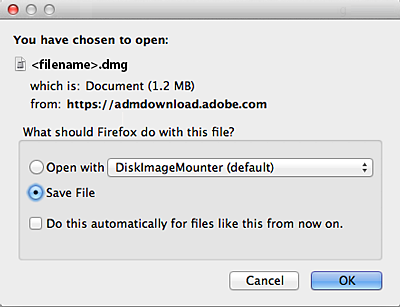
Double-click the .dmg file. (If you don't see the Downloads window, choose Tools > Downloads.)

Double-click Install Adobe Acrobat Reader to start the installation.

When asked if you're sure that you want to open the file, select Open .

When prompted, enter your macOS user name and password. In case you do not remember your password, refer the Apple document: https://support.apple.com/HT202860

When you view the confirmation message that the installation is complete, select Finish .

Safari: Download and install Acrobat Reader
Double-click the .dmg file. (If you don't view the Safari Downloads window, select Finder > (User Name) > Downloads .)

Double-click Install Adobe Acrobat Reader to start the installation.

When prompted, enter your macOS user name and password. In case you do not remember your password, refer the Apple document: https://support.apple.com/HT202860

Chrome: Download and install Acrobat Reader
Go to the Adobe Acrobat Reader download page, and select Download Acrobat Reader .
When the file appears at the bottom of the browser, select the file. (If you don't view the file, choose Downloads from the Chrome menu.)

Double-click Install Adobe Acrobat Reader to start the installation.

When prompted, enter your macOS user name and password. In case you do not remember your password, refer the Apple document: https://support.apple.com/HT202860 .

When you view the confirmation message that the installation is complete, select Finish .

Still need help?
To see if other users are experiencing similar download and installation problems, visit the Acrobat Reader user forum . Try posting your problem on the forums for interactive troubleshooting. When posting on forums, include your operating system and product version number.
More like this
- Install Adobe Acrobat Reader | Windows
- Troubleshoot Acrobat Reader download
- Troubleshoot macOS 10.x system errors, freezes
- Close conflicting processes or apps
- Close Safari notification agent
Get help faster and easier
Quick links

Adobe MAX The Creativity Conference
Oct 14–16 Miami Beach and online
The Creativity Conference
Legal Notices | Online Privacy Policy
Share this page
Language Navigation
Best PDF Extensions: Comprehensive Tools for PDF Management
Featured In
Table of contents, best pdf editing extension:, saving a page as pdf, adobe alternative:, which pdf type to use, best pdf to word converter, top pdf viewers, different types of pdfs:, pdf converters, best method to save a pdf, best pdf reader for mac, top 8 pdf software & apps:.
Exploring the realm of PDF extensions for editing, viewing, converting, and more.PDF files are the cornerstone of document sharing, offering compatibility...
Exploring the realm of PDF extensions for editing, viewing, converting, and more.
PDF files are the cornerstone of document sharing, offering compatibility and versatility. With a plethora of options available in the form of extensions, apps, and software, it's easy to feel overwhelmed. Let's break down some of the best PDF tools available today.
The Kami extension for Google Chrome is a top pick for many. It allows users to edit text, underline, annotate, and even merge pdf documents directly within the Chrome browser. Plus, its user-friendly interface and toolbar provide an excellent range of functionality.
When it comes to saving a web page as a PDF, the "Save as PDF" extension for Chrome and Firefox stands out. Just right-click on any web page, and you're set. It also supports customization, ensuring that web pages are converted with precision.
Xodo is a fantastic PDF viewer and editor that rivals Adobe Acrobat. Available on Windows, Android, iOS, and as a Chrome extension , Xodo is known for its robust feature set, including the ability to annotate PDF, open PDF from Google Drive, Dropbox, and OneDrive, and more.
PDF/A is the preferred format for archiving as it preserves the document's look and feel. However, for broader compatibility and sharing, PDF/X is an excellent choice.
Smallpdf is a robust online tool that can convert PDF to Microsoft Word, Excel, PowerPoint, and even JPG. It also offers additional features like merging, editing, and OCR functionality.
Apart from Adobe Acrobat, some of the best PDF viewers include Xodo, Microsoft Edge (for Windows users), and Preview (for Mac). These tools allow users to view PDF, bookmark pages, and add annotations.
- PDF/A: Archival, ensures long-term preservation.
- PDF/E: For engineering documents.
- PDF/X: Ideal for printing and publishing.
Tools like Adobe Acrobat extension for Chrome and online platforms like Smallpdf enable users to convert HTML, docs, and other formats into the PDF format.
Always choose "Save As" instead of just "Save". This ensures higher quality and reduces the chance of file corruption.
Preview, built into every Mac, is a reliable tool. However, for more advanced features, Adobe Acrobat Reader for Mac is worth considering.
- Adobe Acrobat: The industry standard for PDF editing, reading, and converting.
- Xodo: Multi-platform viewer and editor with a user-friendly interface.
- Kami: Chrome extension allowing users to annotate, edit text, and merge PDF pages.
- Smallpdf: Convert PDF to various formats, including Word, Excel, and PowerPoint.
- Save as PDF: Web browser add-ons for saving HTML pages as PDFs.
- Microsoft Edge: Windows' built-in PDF reader with basic editing capabilities.
- Preview: Native to Mac, offering basic PDF reading and editing features.
- PDF Reader Extension for Safari: Enables seamless PDF reading for iPhone and Mac users.
PDF vs PDF/a
Celebrity Voice Generators: A How to

Cliff Weitzman
Cliff Weitzman is a dyslexia advocate and the CEO and founder of Speechify, the #1 text-to-speech app in the world, totaling over 100,000 5-star reviews and ranking first place in the App Store for the News & Magazines category. In 2017, Weitzman was named to the Forbes 30 under 30 list for his work making the internet more accessible to people with learning disabilities. Cliff Weitzman has been featured in EdSurge, Inc., PC Mag, Entrepreneur, Mashable, among other leading outlets.
- a. Send us an email
- b. Anonymous form
- Buyer's Guide
- Upcoming Products
- Tips / Contact Us
- Podcast Instagram Facebook Twitter Mastodon YouTube Notifications RSS Newsletter
Safari 18 Features: Highlights, New Reader Mode, and Video Viewer
In macOS Sequoia , Apple has some additional features in Safari 18 that are likely to be welcomed by Mac users. Here's a quick rundown of what's new.

Highlights can be accessed via a new site menu icon that appears in the address bar, from which you can quickly pull up relevant information about a site, such as directions, summaries, or quick links to learn more about people, music, movies, and TV shows.
As of writing this, Highlights does not appear to work outside of the United States, so it is likely to be region-specific at this early state. However, there are other changes to Safari that are live wherever you are located.

If you click the button again, a dropdown menu lets you change the theme (white, off-white, gray, black) and choose your preferred font (Athelas, Charter, Georgia, Iowan, New York, Palatino, San Fransisco, Seravek, and Times New Roman).
In this menu, you can also find text size options by percentage (from 50% to 300%), as well as a "Find..." option to find a word or phrase on a page, and a button to Hide Reader mode.
Apple says that Reader can also provide a summary of an article, along with a table of contents in a sidebar, but we could not get this to work, likely because it is an aspect of Apple Intelligence , which will not be introduced until later in the year.

In other Safari-related changes, macOS Sequoia beta adds support for opening links directly in web apps. Now, when you click a link, that link should open in the web app instead of your default web browser. You can also now personalize web apps on Mac with Safari Web Extensions and Content Blockers.
Lastly, Safari 18 beta for iOS, iPadOS, visionOS , macOS Sequoia and macOS Sonoma brings inline predictive text to the web, and you can now set which Safari profile should be used to open particular websites.
Get weekly top MacRumors stories in your inbox.
Popular Stories

Apple Reportedly Suspends Work on Vision Pro 2
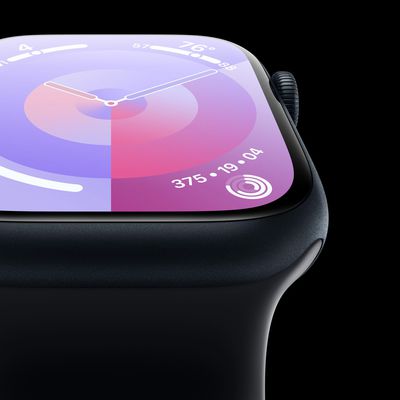
Kuo: Apple Watch Series 10 to Get Larger Screen and Thinner Design

Apple's 2024 Back to School Sale Launching This Week
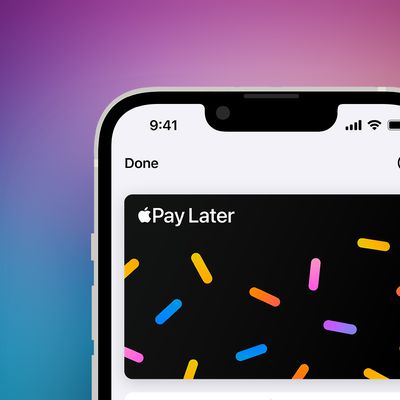
Apple Discontinuing Apple Pay Later
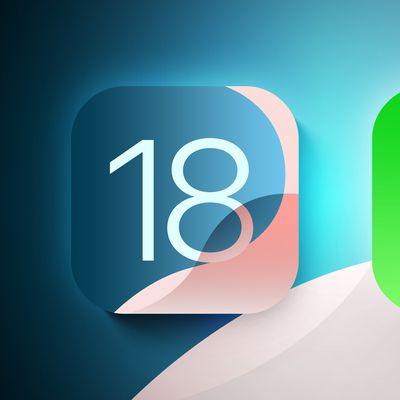
iOS 18 Adds These 5 New Features to CarPlay

Apple Developing Thinner MacBook Pro, Apple Watch, and iPhone

watchOS 11 Supports Automatic Nap Detection
Top rated comments.
People still use Safari? I tried it when i first had my Mac, but I could nto get on with it, then I tried it again a few weeks ago, but had problems with some sites not working, so I have gone back to Firefox.
Safari is still the second-most used browser. Far behind Chrome but also far ahead of Firefox. Of course, most of that is iOS/iPadOS. But even on the desktop, Safari is ahead of Firefox and Safari is not even available on Windows & Linux, unlike Firefox. So yeah... People still use FireFox? :D
No fixes to the messy interface? I have no idea where to find stuff anymore. Scattered around the share sheet, under the A button, the refresh button, the extensions menu, third party buttons, … And there are iCloud tabs, tab groups, profiles, tab group favorites, ….
Next Article

Our comprehensive guide highlighting every major new addition in iOS 17, plus how-tos that walk you through using the new features.

Apple News+ improvements, cross-platform tracker alerts, website app downloads for the EU, and more.

Get the most out your iPhone 15 with our complete guide to all the new features.
A deep dive into new features in macOS Sonoma, big and small.

Updates to Mail, Photos, Messages, and more, with Apple Intelligence features throughout.

iPhone Mirroring, Safari improvements, new Passwords app, and Apple Intelligence features throughout.

Action button expands to all models, new Capture button, camera improvements, and more.

Larger displays, new Capture button, camera improvements, and more.
Other Stories

6 hours ago by Tim Hardwick

10 hours ago by Tim Hardwick

1 day ago by Tim Hardwick

6 days ago by Tim Hardwick
1 week ago by Tim Hardwick

IMAGES
VIDEO
COMMENTS
Top 8 Software or Apps for Safari: Adobe Acrobat: Renowned PDF editor and viewer. Offers functionalities like annotating, merging, and editing PDFs. A free version is available. PDF Expert: A versatile PDF tool for iOS and macOS. Enables users to edit PDF, annotate, and merge docs effortlessly. Pocket: Best for saving articles and web pages for ...
In the Safari app on your Mac, click the link to a PDF. Move the pointer to the bottom center of the browser window to see controls. To stop viewing the PDF, click the Back button in the toolbar. In Safari on your Mac, click a link to a PDF to see the file. Safari has a built-in PDF reader, so you don't need to download and install one.
From PDF editing to annotation, extensions can supercharge your Safari PDF experience. We've curated a list of the top 5 extensions that every Apple aficionado should consider. 5 Best PDF Extensions for Safari: Adobe Acrobat Reader Extension: Beyond just viewing, this Adobe Acrobat extension allows for PDF editing, signatures, and comments.
Launch Safari and choose Safari > Preferences. In the Preferences window, click Security , and then click Website Settings next to Internet plug-ins. Select Adobe Reader in the list of plug-ins. Under When Visiting Other Websites, in the drop-down list choose Allow Always and click Done. The browser is now set to use the Adobe Reader plug-in to ...
To access your Safari plug-ins or extensions, open Safari > Preferences and then head to the Websites tab. Scroll down the menu on your left, and you should find the Plug-ins or Extensions headings. Click on any plug-in in this list to see a list of current websites and whether that plug-in is working on the website where you have the PDF open.
If you have both Adobe Acrobat and the free Adobe Reader installed, make sure that you start both (and potentially accept the EULA) before you use the browser plug-in. In general, make sure that you follow the instructions on this page to enable Acrobat/Reader in Safari: Display PDF in browser Adobe Acrobat DC, Acrobat Reader DC.
Read any PDF file on an iPhone. Install the Acrobat Reader app from the App Store. Launch the app. On the bottom menu bar, select Files. Locate the file on your iPhone and select it. You can now scroll through and read your PDF. Reading PDF files gets even easier as you use the app because it knows where your files are located.
Internet Explorer. Internet Explorer 11 uses an ActiveX based plug-in. Follow the steps below to configure Internet Explorer to use the Acrobat/Acrobat Reader plugin for viewing PDFs: Open Internet Explorer, and choose Tools > Manage Add-ons. Under Add-on Types, select Toolbars and Extensions. In the Show menu, select All Add-ons.
As we switched from an old Safari App Extensions platform to a modern Safari Web Extensions platform, there could be some problems that are out of our control. If the extension wasn't activated for you after the update, or the extension's settings page doesn't show up, or the dark theme looks broken, try the following: ... Dark Reader for ...
The alternative is, when you are viewing a PDF within Safari, you can select File > Export as a PDF from the menubar which should then prompt you with a save dialog box. Another alternative is, before clicking on a PDF link on a website/search result, you can right click and select Download Linked File As which will then prompt you with a save ...
The power of Acrobat, right in your browser. Do more than just view your PDF files online. With the Acrobat extension, you can mark up proposals, leave sticky note comments, and use your favorite PDF tools without leaving your browser. 10,000,000+ active users. Get Chrome extension.
In the Safari app , you can mark up a webpage, highlight your favorite parts, draw and write notes, and share your document as a PDF with others. Tap . Tap Markup , then use the tools to annotate the webpage. Tap Done, then tap Save File To. Choose a file to save it to, then tap Save. In Safari on iPhone, mark up a webpage, highlight your ...
The app developer is generous. Dark Reader supports all the compatible devices — iPhone, iPad, iPod touch, and Mac, and can be downloaded for free on all your other devices if you purchase it ...
Take that web page to go as a PDF. In Safari, open a web page and go to File > Export as PDF. Follow the on-screen prompts to name the file and select a storage location. Alternatively, press Command + P in Safari. Select the PDF drop-down menu, choose Save as PDF, and then select Save. Press Shift + Command + R in Safari to open the Reader.
Follow the instructions to add to your browser. 1. Display your Bookmarks/Favorites Bar: "Show Bookmarks Toolbar". 2. Drag the "Print Friendly" button above to your Bookmarks Toolbar. 3. When you want to print a webpage, click the "Print Friendly" button in your Bookmarks Toolbar. Safari. Extension by PrintFriendly PDF.
Reader's Preferences > Internet > Display PDF in Browser is always dimmed. To disable Safari integration, delete the AdobePDFViewer.plugin from /Library/Internet Plug-ins. To reenable Safari integration, rerun the installer over the current installation. Start the Acrobat/Reader X installer from the original media, and then follow the onscreen ...
Step 1: Launch Safari and choose Safari > Preferences. Step 2: In the Preferences window, click Security, then click Website Settings next to Internet plug-ins. Step 3: Select the pdf reader extension in the list of plug-ins.
Freely highlight and annotate the open web using the Reader browser extension. RSS. RSS is in a renaissance. Easily subscribe to the RSS feeds of your favorite websites in Reader to never miss a post. ... we had to make sure the app works well on Chrome, Firefox, and Safari as well as iOS and Android. We're hoping the "public beta" label ...
Extension - NaturalReader is a text to speech tool that lets you listen to any online text with natural sounding voices. You can easily install it on Chrome or Edge ...
The headline Apple Intelligence improvements to Safari's Reader mode on iOS 18, iPadOS 18, and macOS Sequoia are not available yet, but the feature has still been updated.
You might try printing and selecting the option to print to pdf file to see if that pdf file looks more correct. Some of what you are encountering is website dependent, as some web sites seem to exclude some or sometimes all images when Export as PDF is chosen. Printing to pdf SOMETIMES works better. Sometimes also, stubborn web sites will work ...
Supercharge your PDF experience by listening to it. Our PDF reader extension will read aloud your PDF in a host of high quality voices. Listen at up to 900 words per minute and get through your PDFs much, much faster. Change your language, voice, and accent. Or let Snoop Dogg, Gwyneth Paltrow, or Mr. President read your PDF aloud to you.
Default or Tab PDF Viewing: Seamlessly integrate Flexi PDF Reader into your browsing routine. Choose to view PDFs by default or within tabs, ensuring uninterrupted browsing. Dark Mode for Eye Comfort: Whether it's late-night research or a preference for dark interfaces, our dark mode ensures strain-free reading in any lighting condition.
Google Scholar PDF Reader Features. One of the best features of Scholar Reader is its ability to preview references as you read. By clicking on in-text citations, you can view a summary of the reference and quickly locate the PDF, saving you time and effort. The extension also allows you to scan a table of contents with ease.
Safari Extensions. Safari extensions are a powerful way to add new features to Safari. They are built in Xcode with web technologies, such as HTML5, CSS3, and JavaScript and powerful native APIs. Now you can distribute and sell them through the App Store on Mac, iPhone and iPad. Meet Safari Web Extensions on iOS; Explore Safari Web Extension ...
Any enabled in Safari will be on by default in the web app. Each web app is uniquely customizable, just like Safari profiles. Safari Extensions. Safari 18 beta also adds support for Mobile Device Management of extension enabled state, private browsing state, and website access on managed devices. This means schools and businesses that manage ...
Go to the Adobe Acrobat Reader download page, and select Download Acrobat Reader. Double-click the .dmg file. (If you don't view the Safari Downloads window, select Finder > (User Name) > Downloads .)
Speechify isn't limited to web pages and documents. It also supports audiobooks and PDFs. I can upload PDF files and have Speechify read them to me, transforming dense documents into easily digestible audio. Widgets and Safari Integration. For iOS users, Speechify offers widgets that provide quick access to the text-to-speech functionality.
Top 8 PDF Software & Apps: Adobe Acrobat: The industry standard for PDF editing, reading, and converting. Xodo: Multi-platform viewer and editor with a user-friendly interface. Kami: Chrome extension allowing users to annotate, edit text, and merge PDF pages. Smallpdf: Convert PDF to various formats, including Word, Excel, and PowerPoint.
Meanwhile, when Safari detects a video on the page, a new Video Viewer mode puts the media front and center, which allows you to adjust the window without obscuring the video.